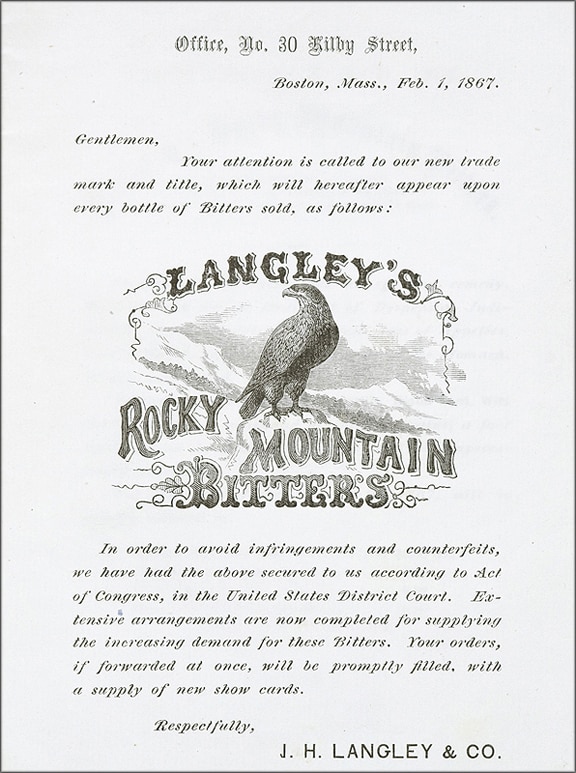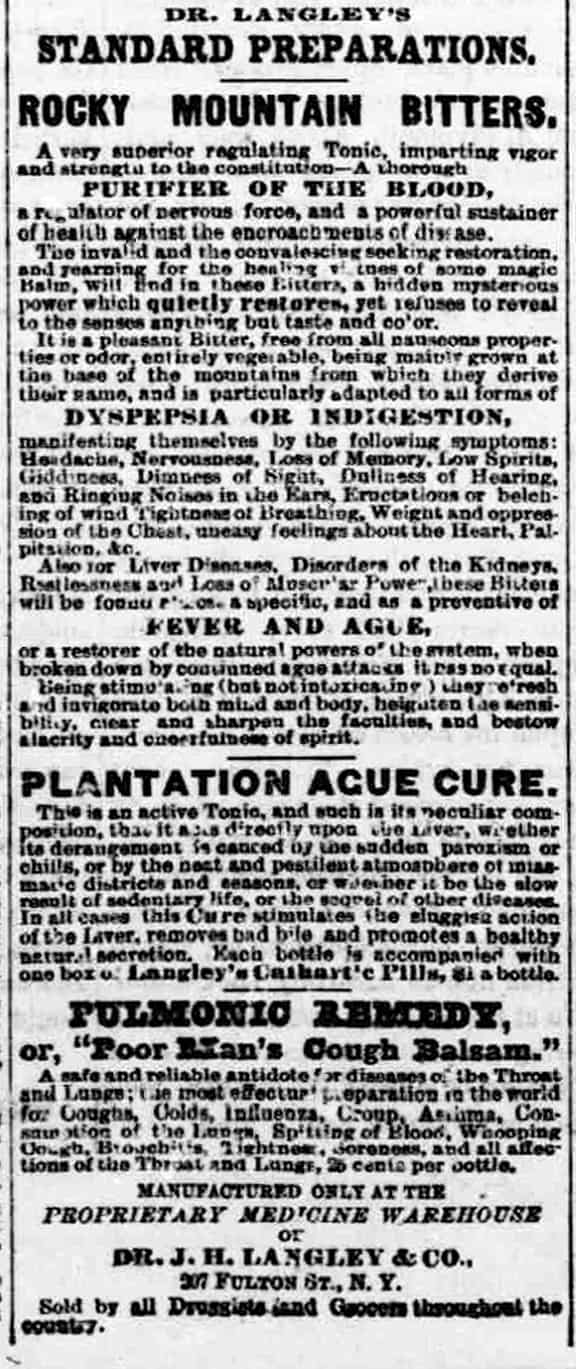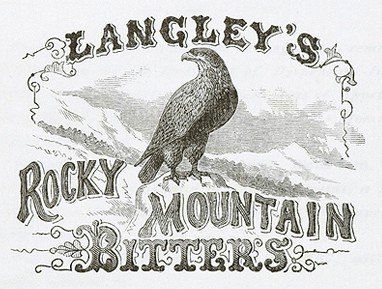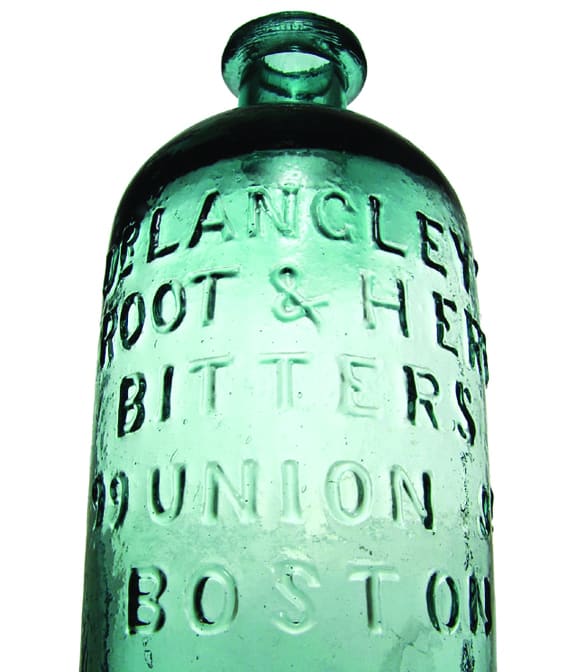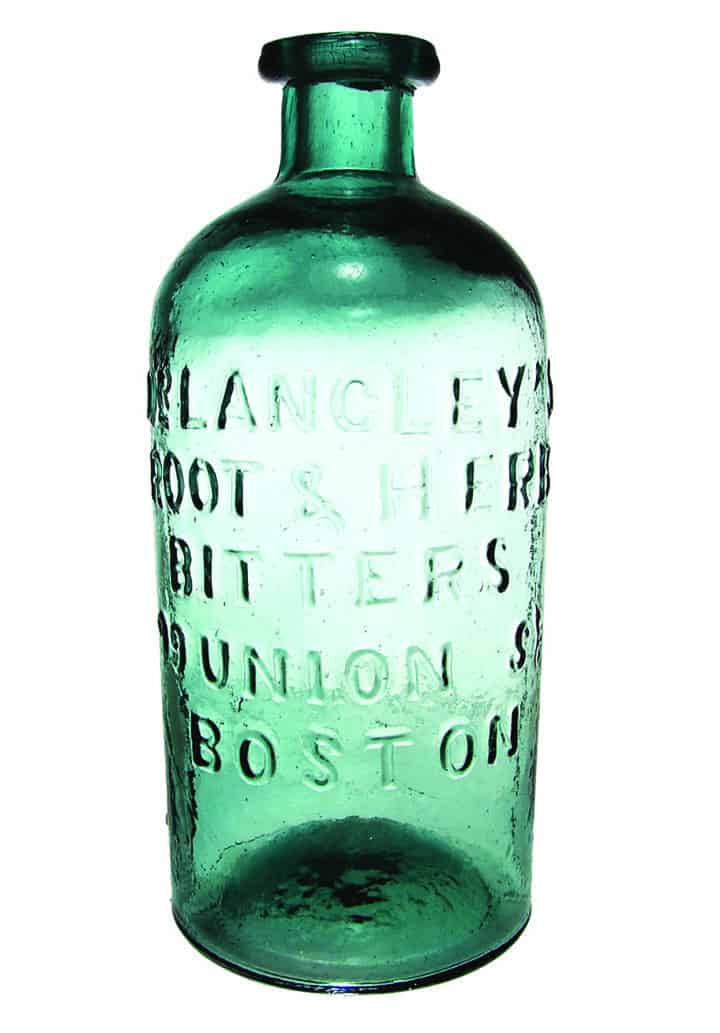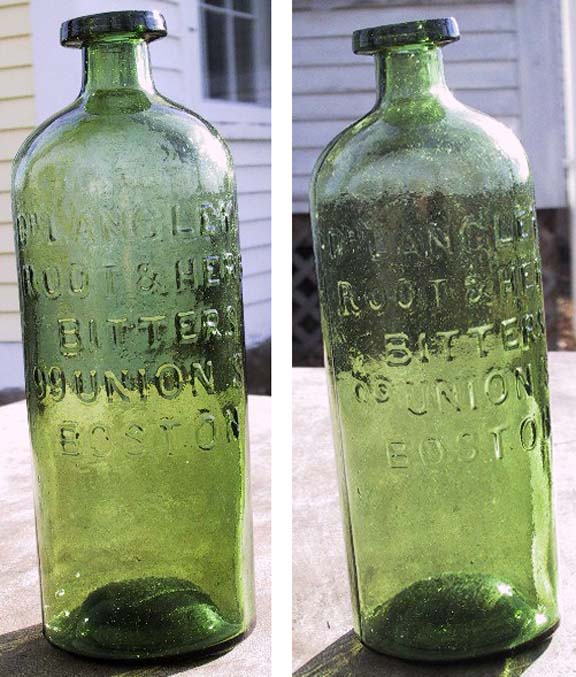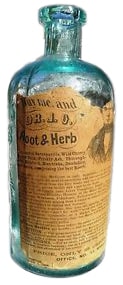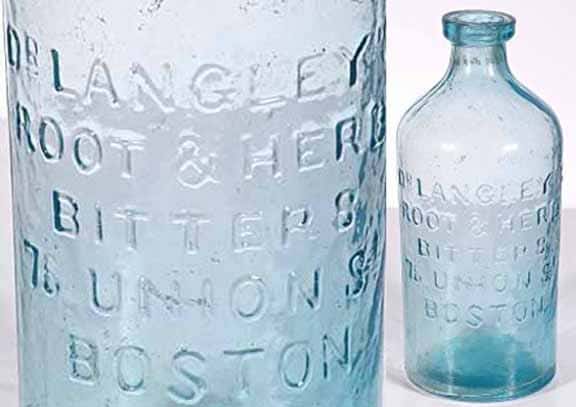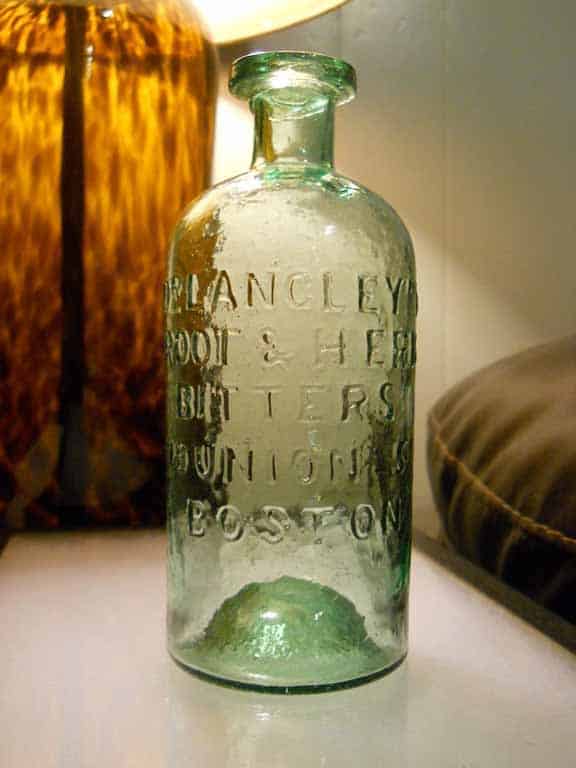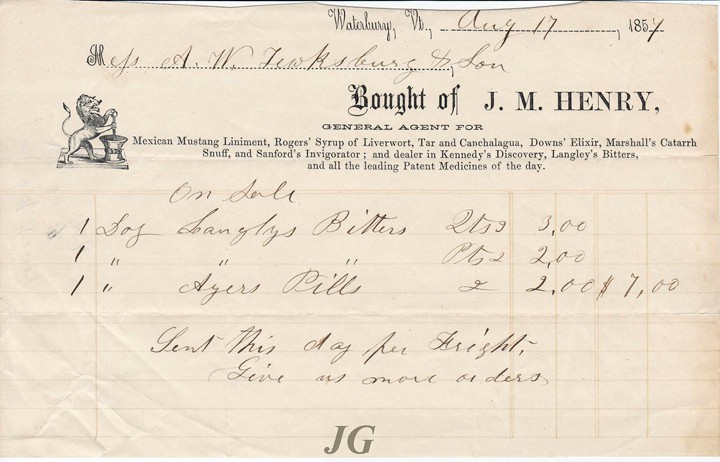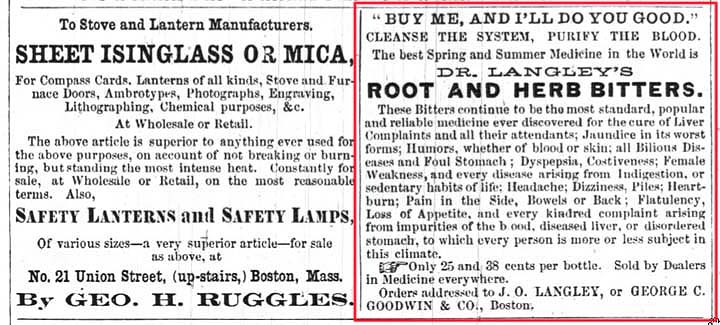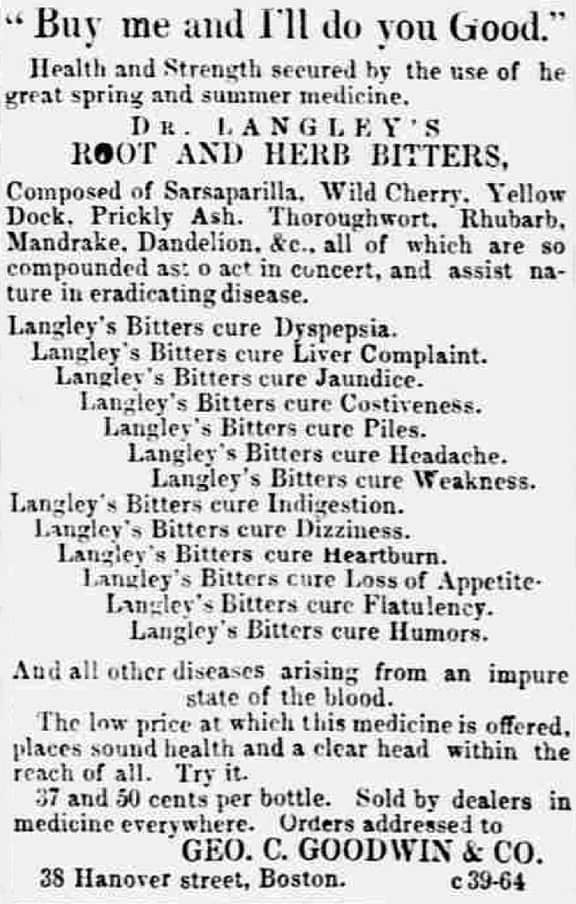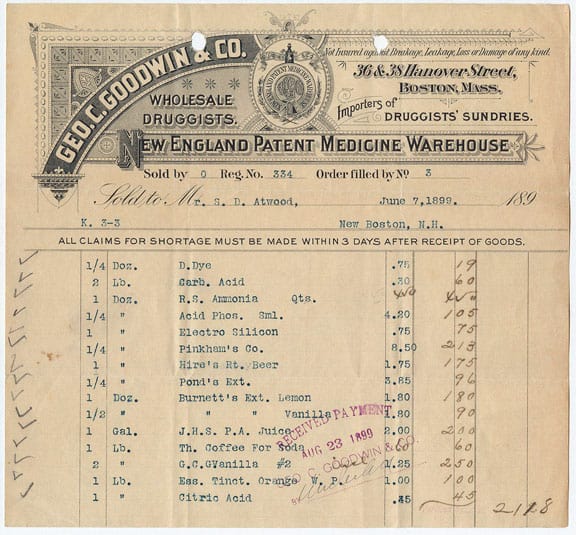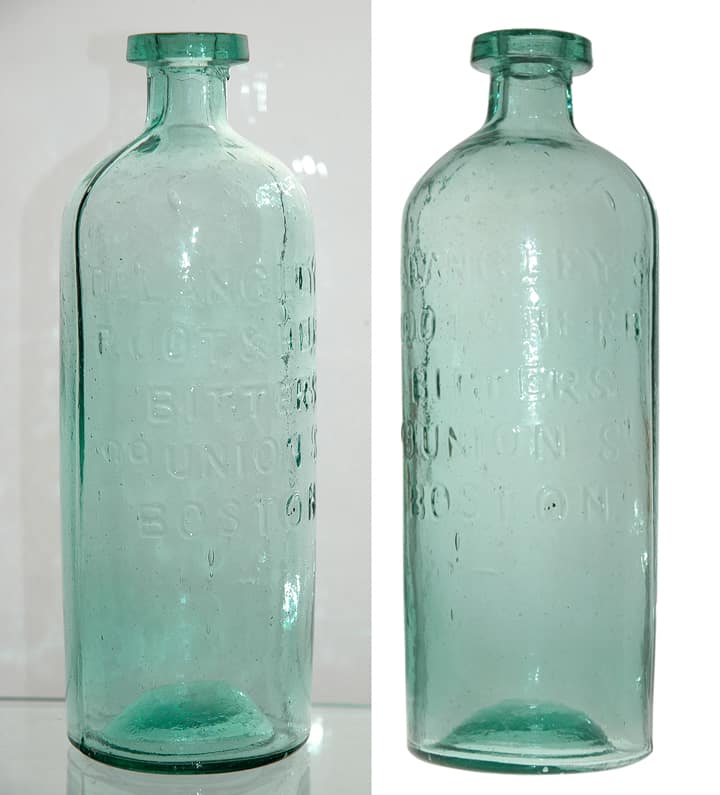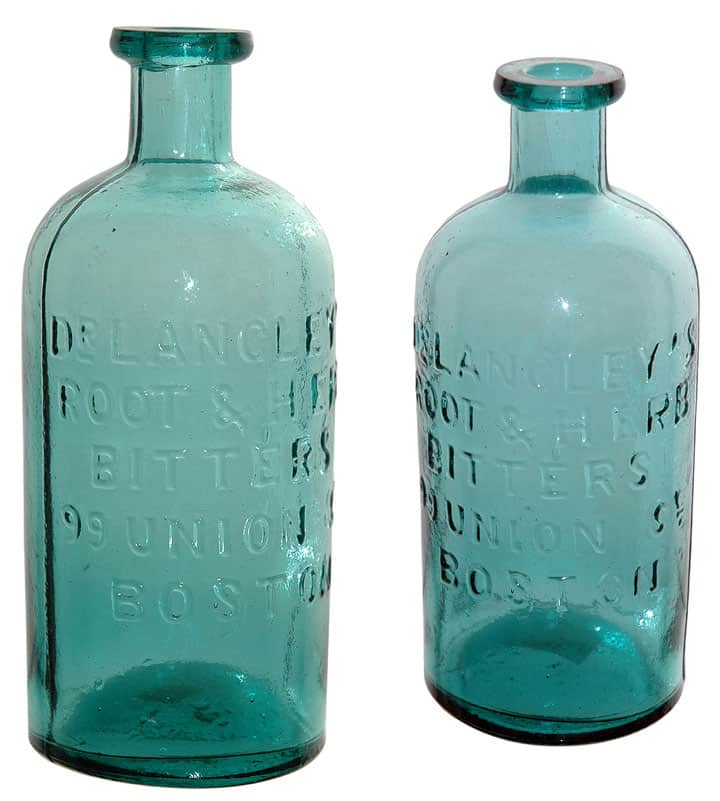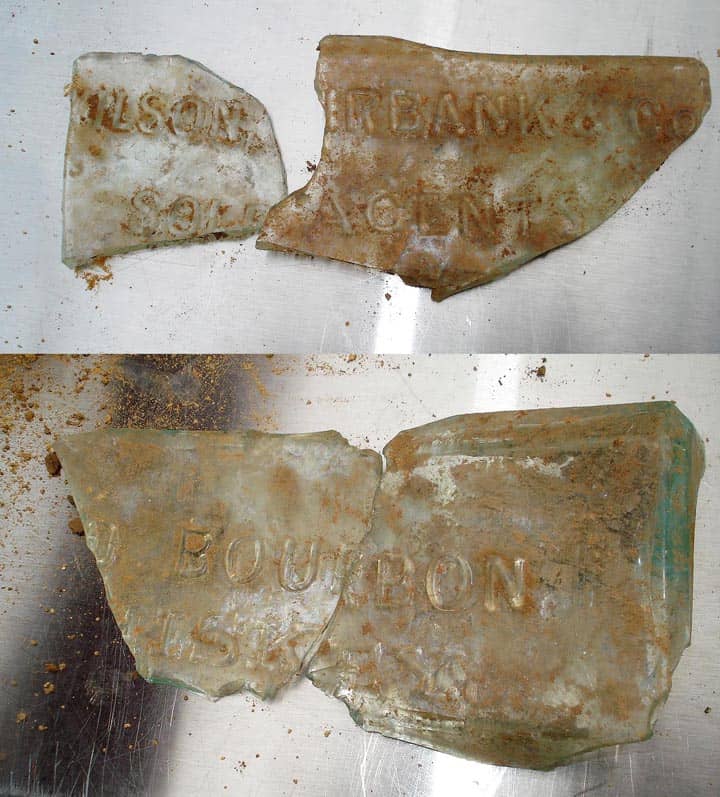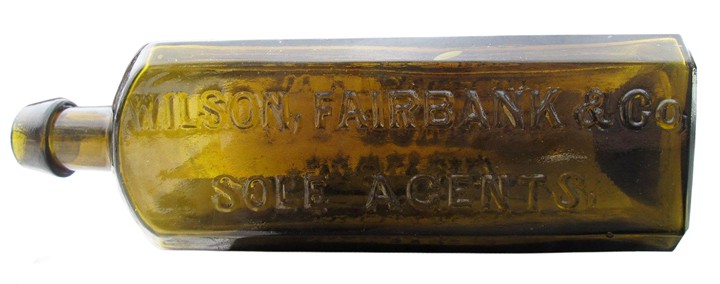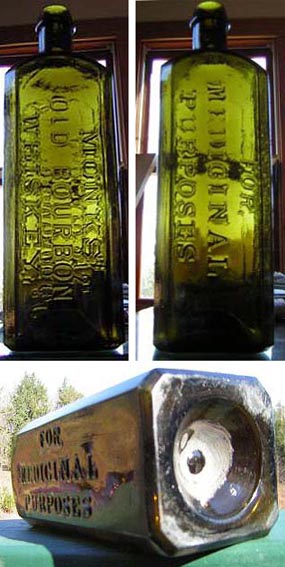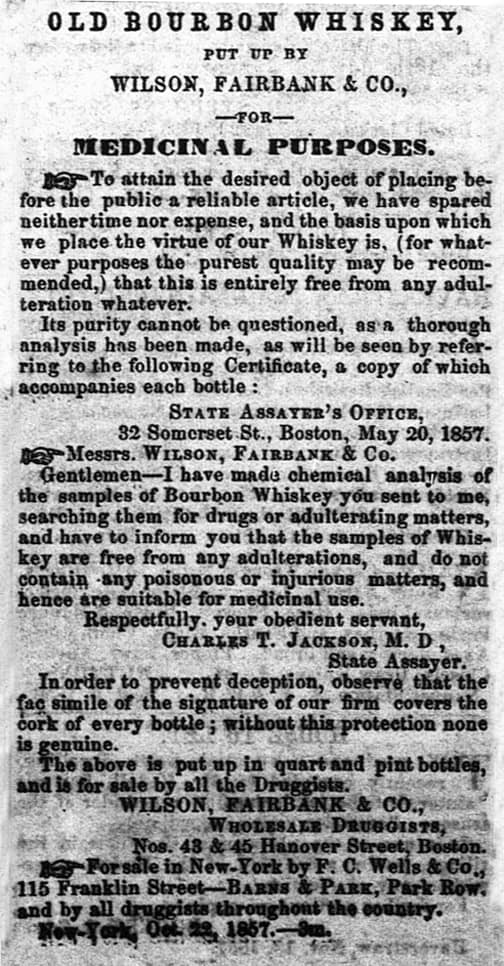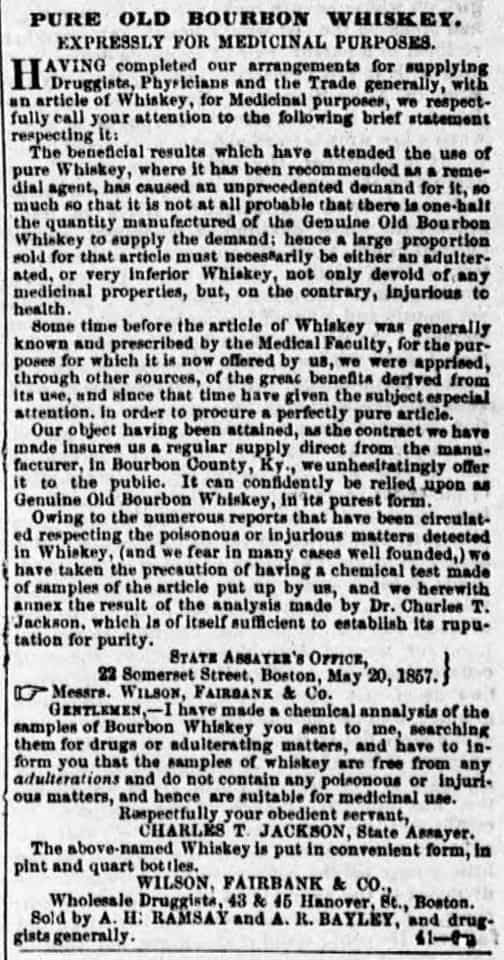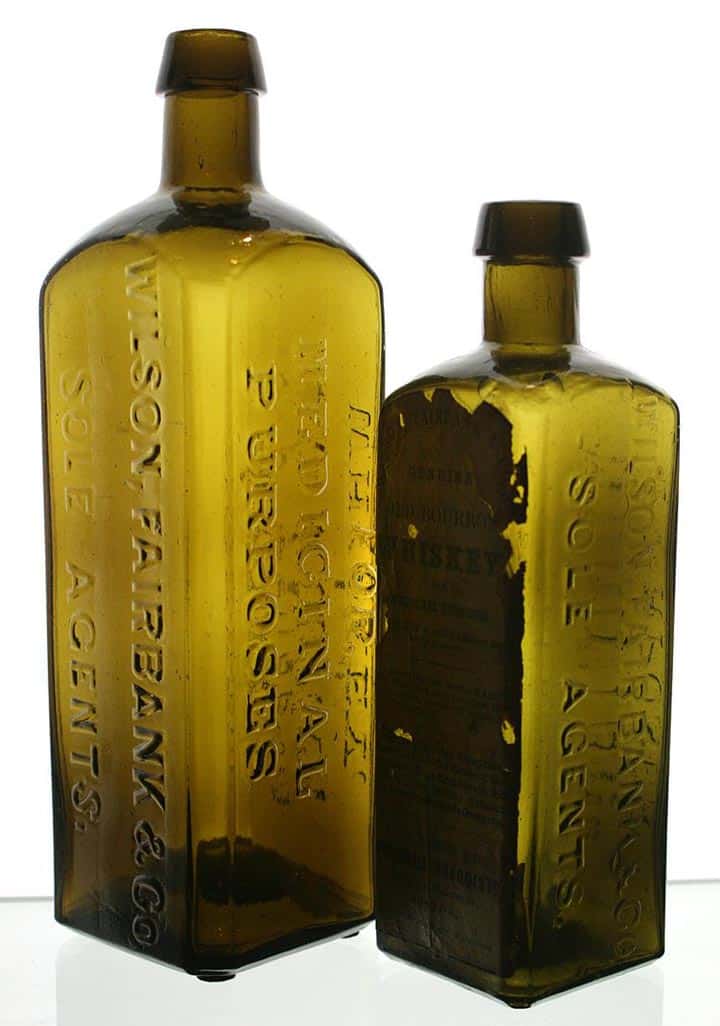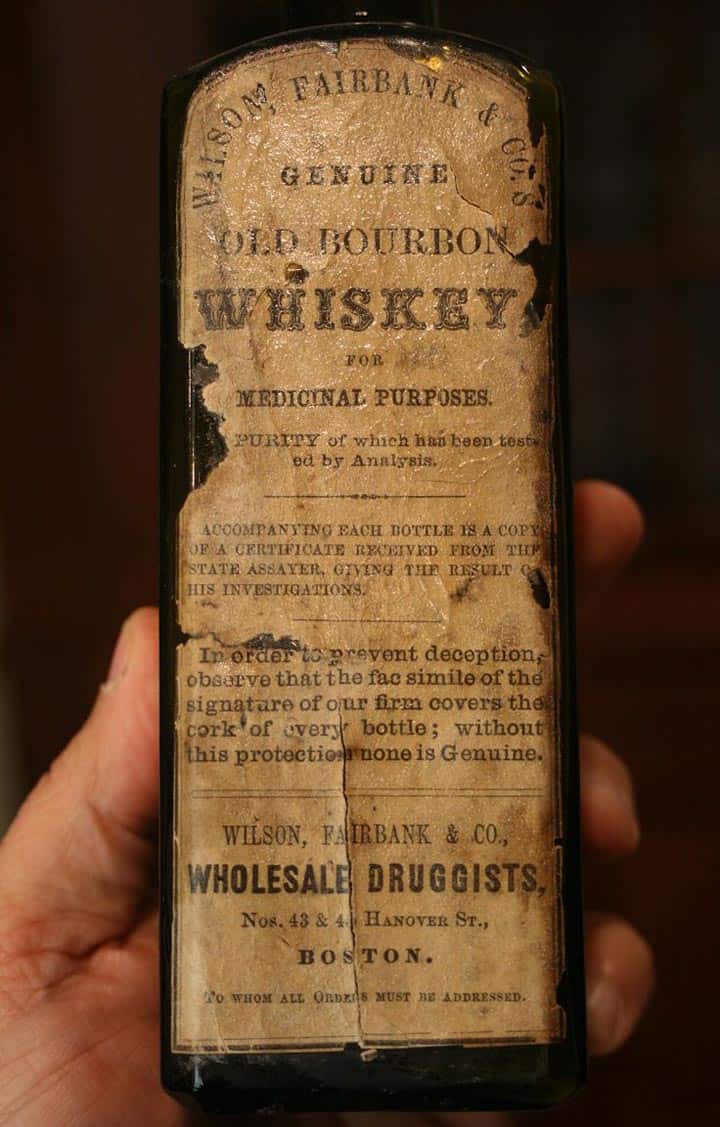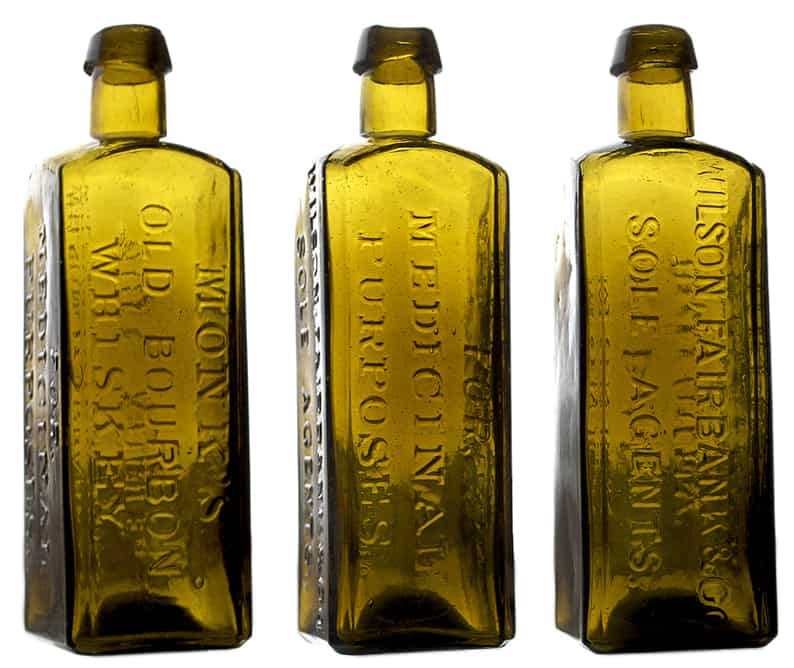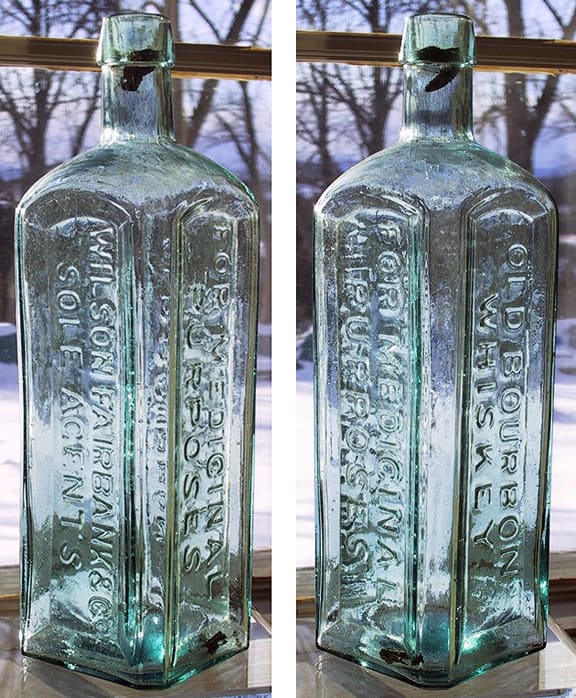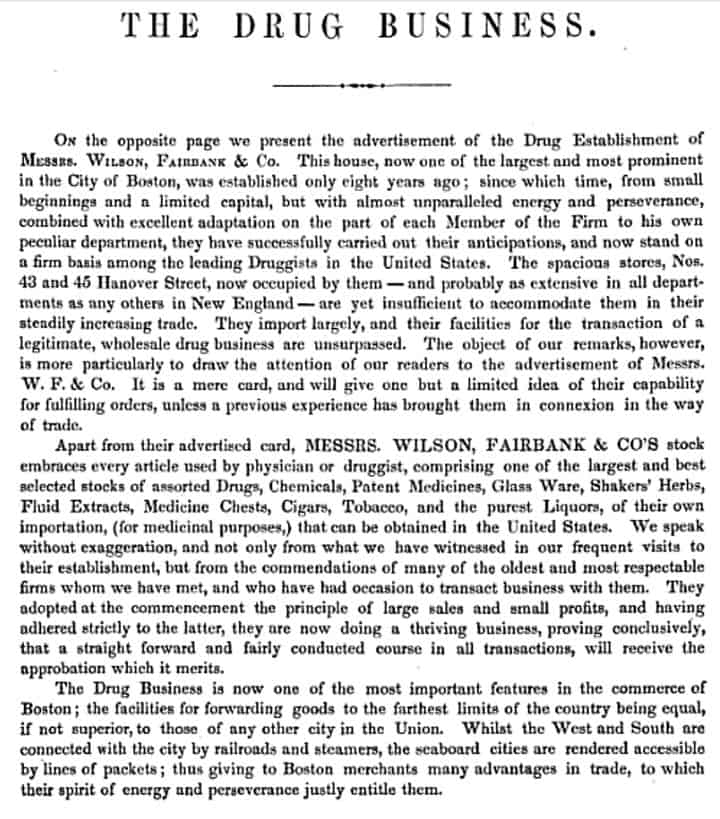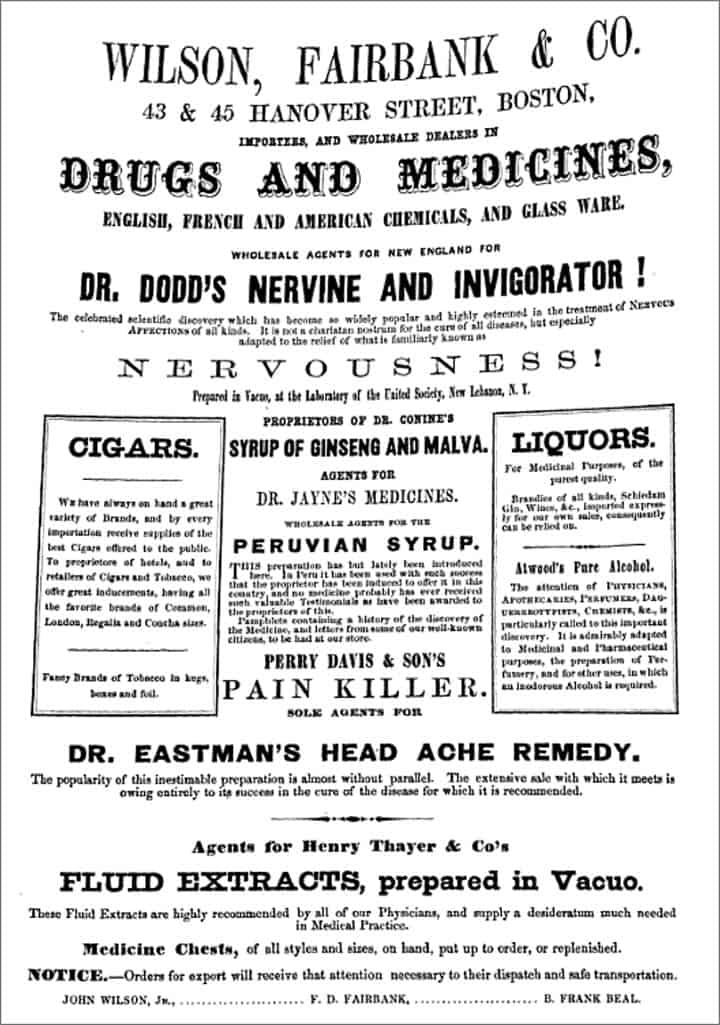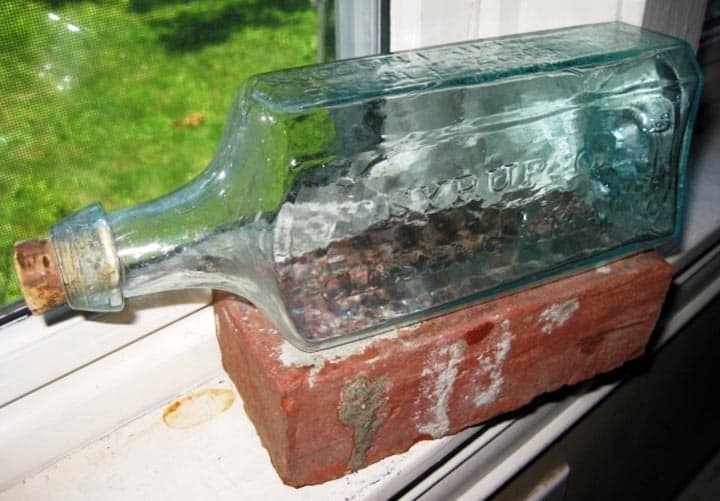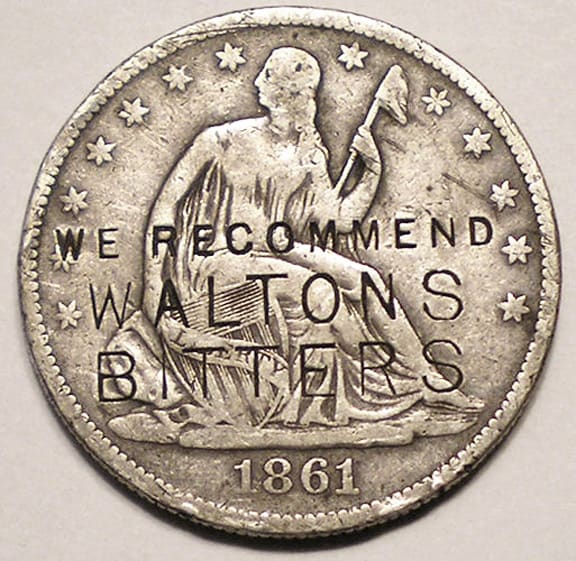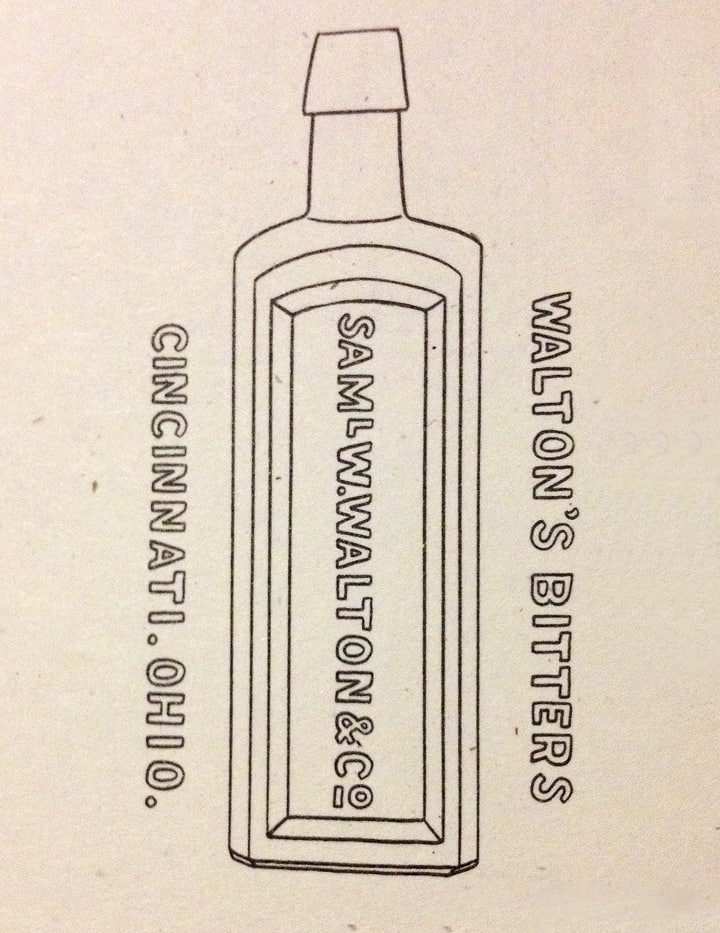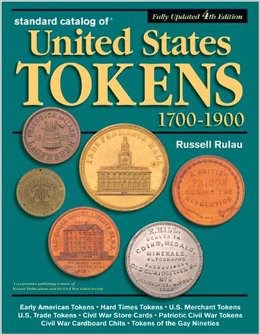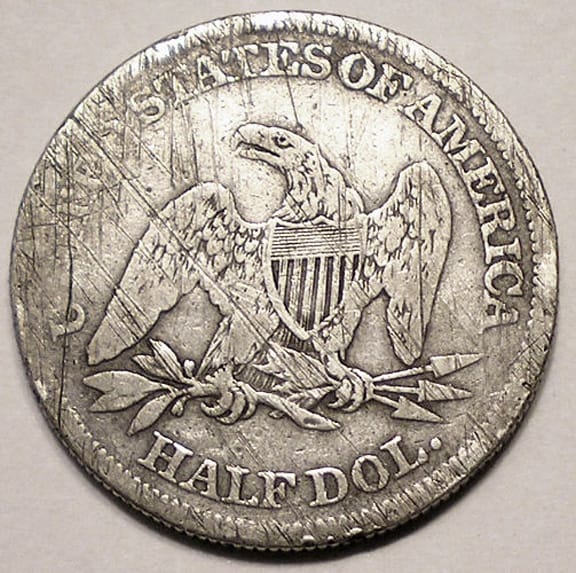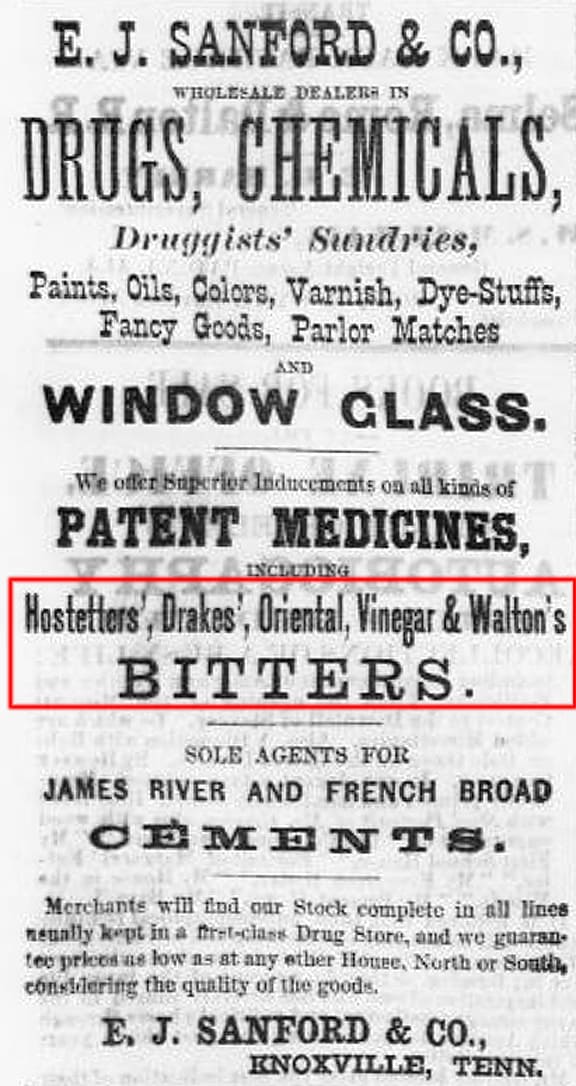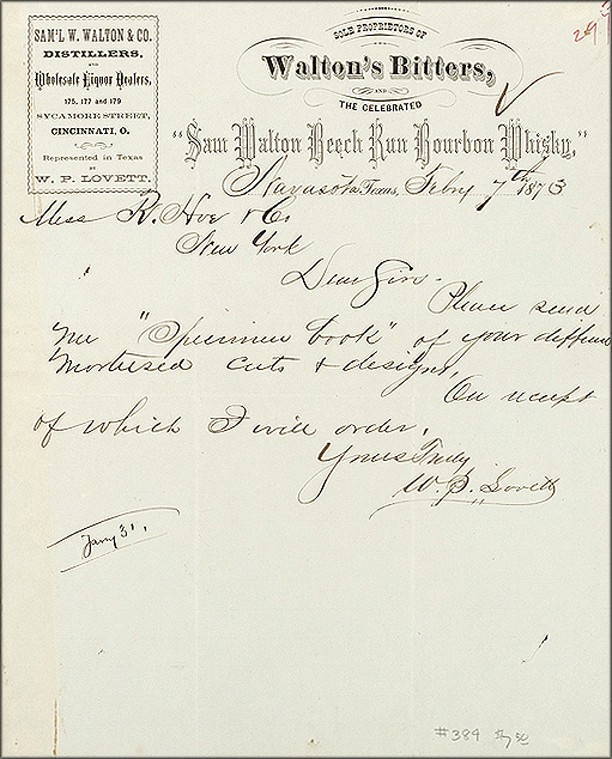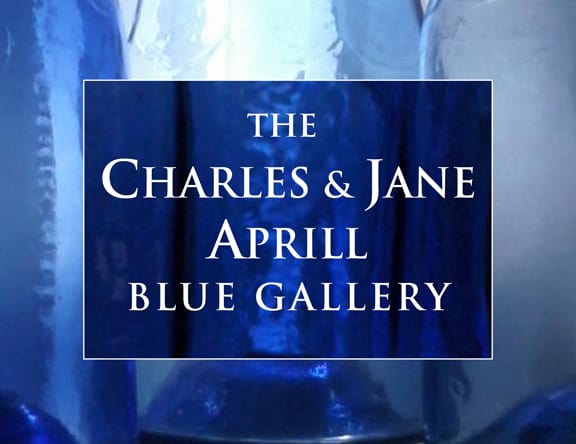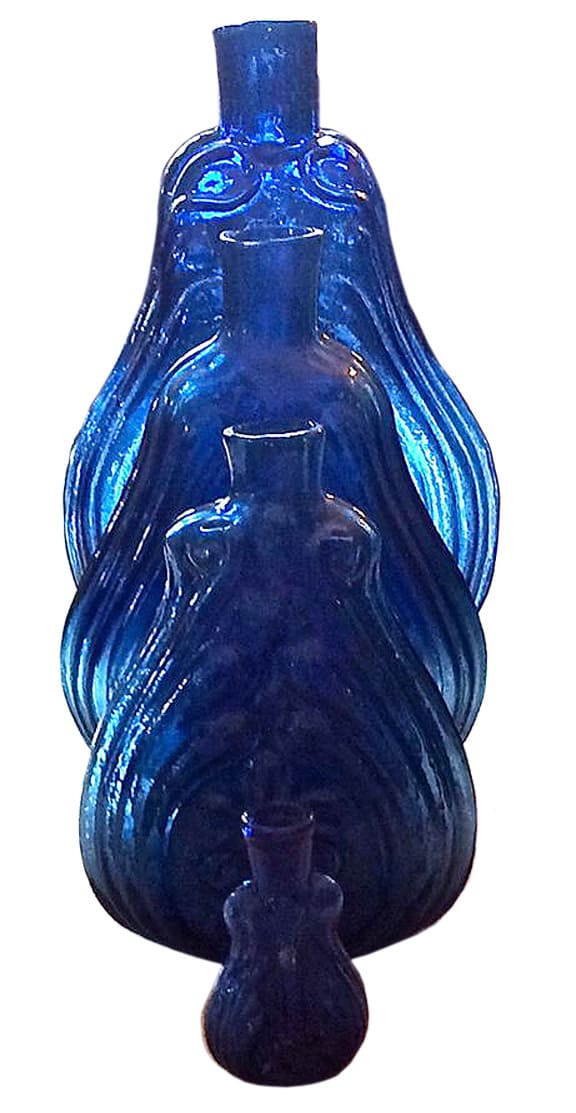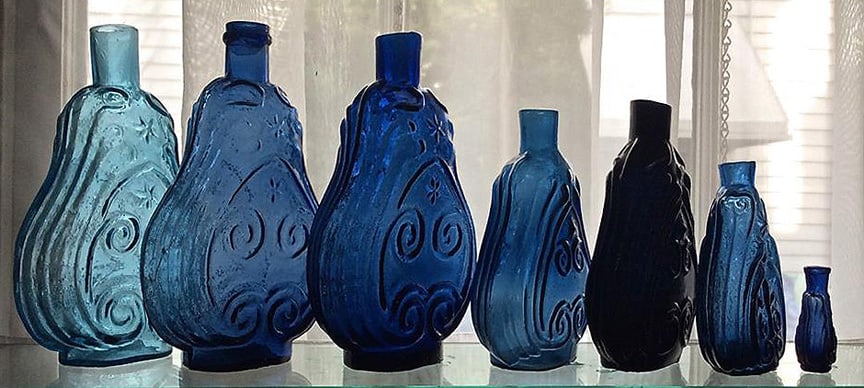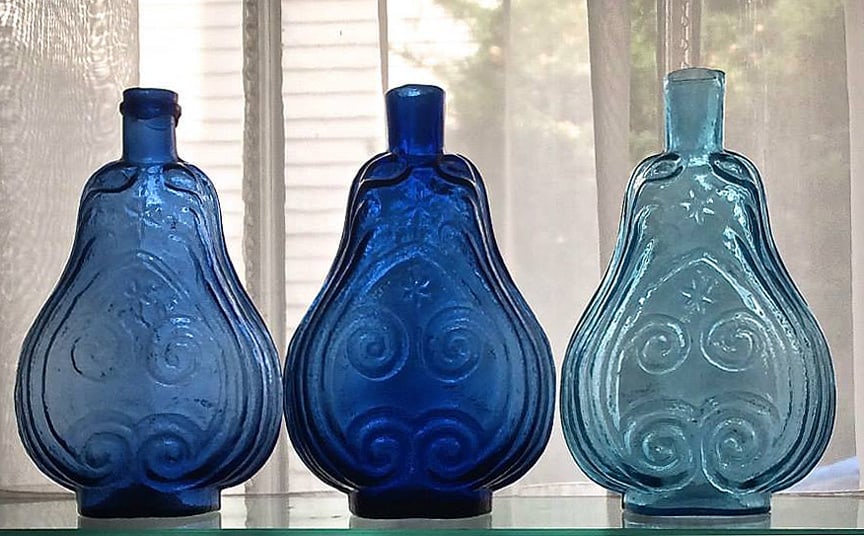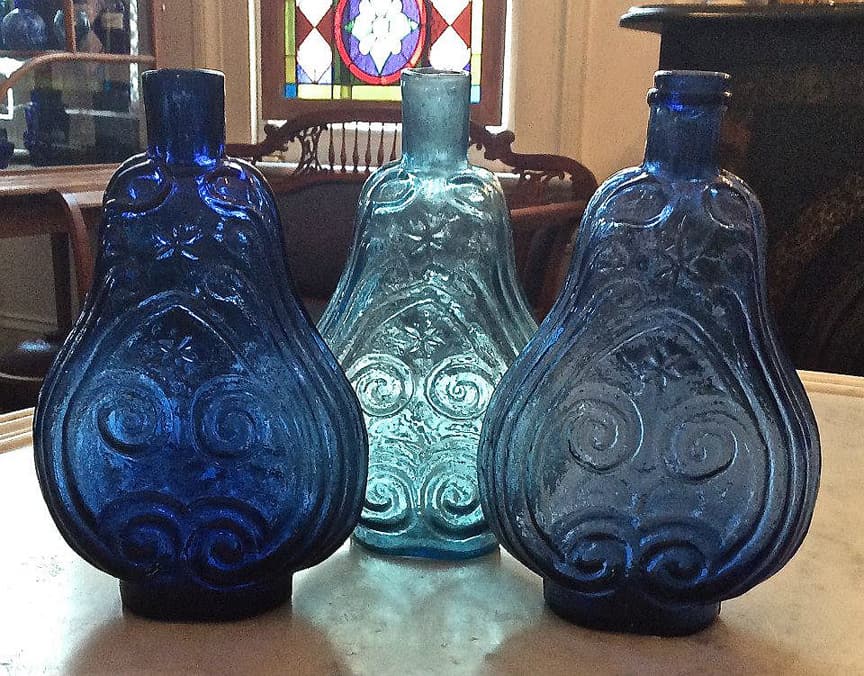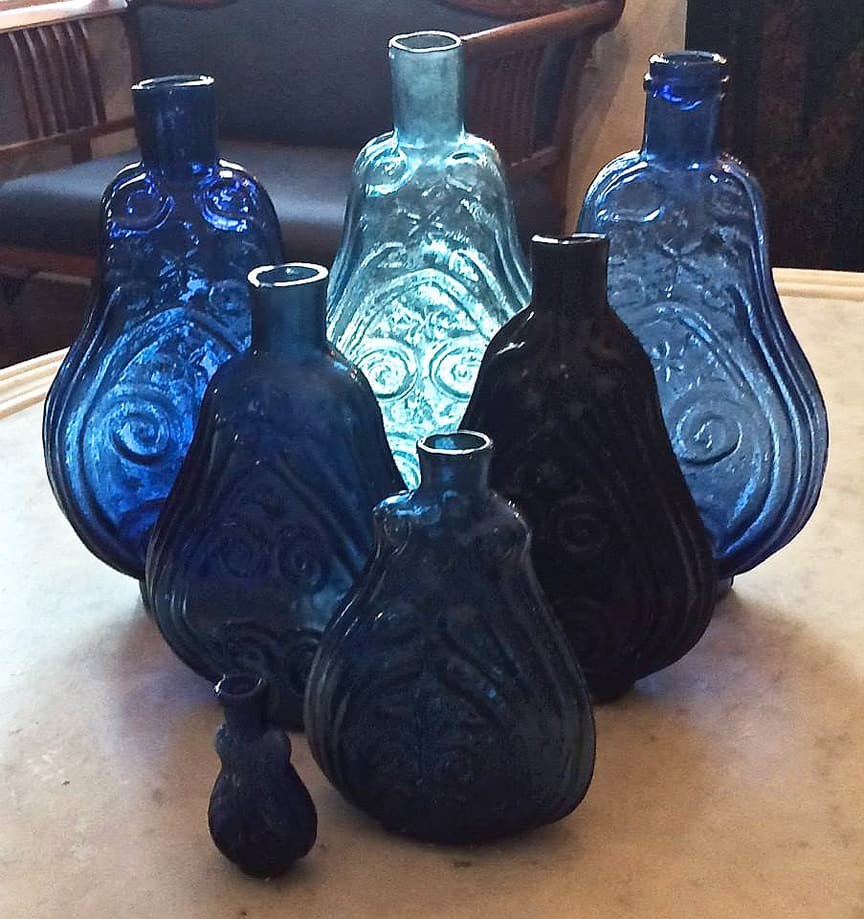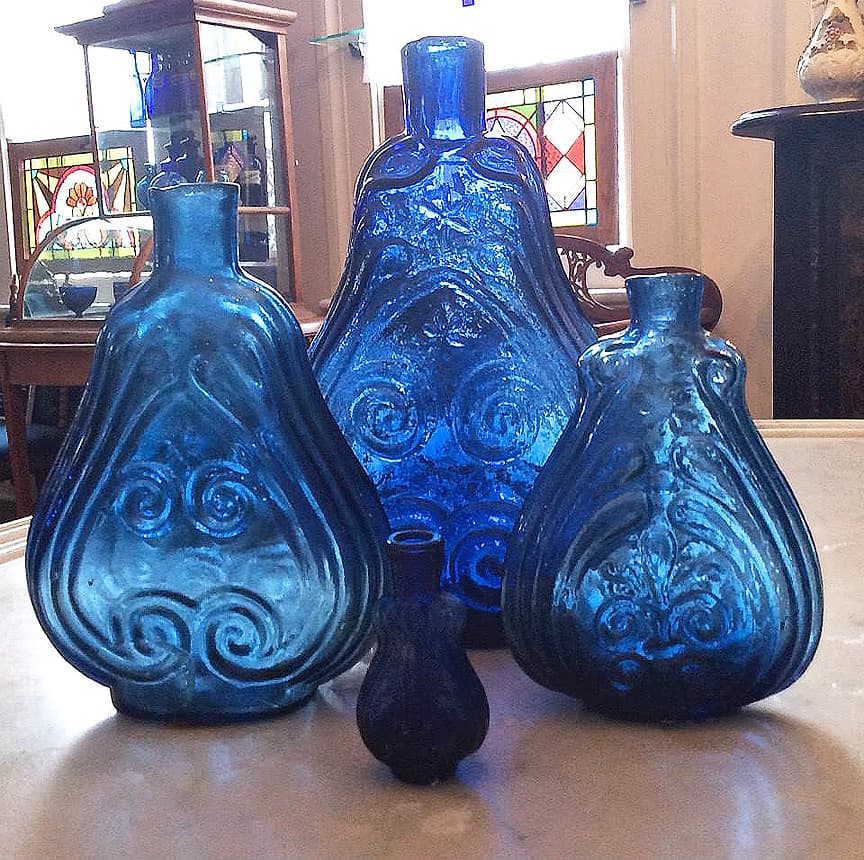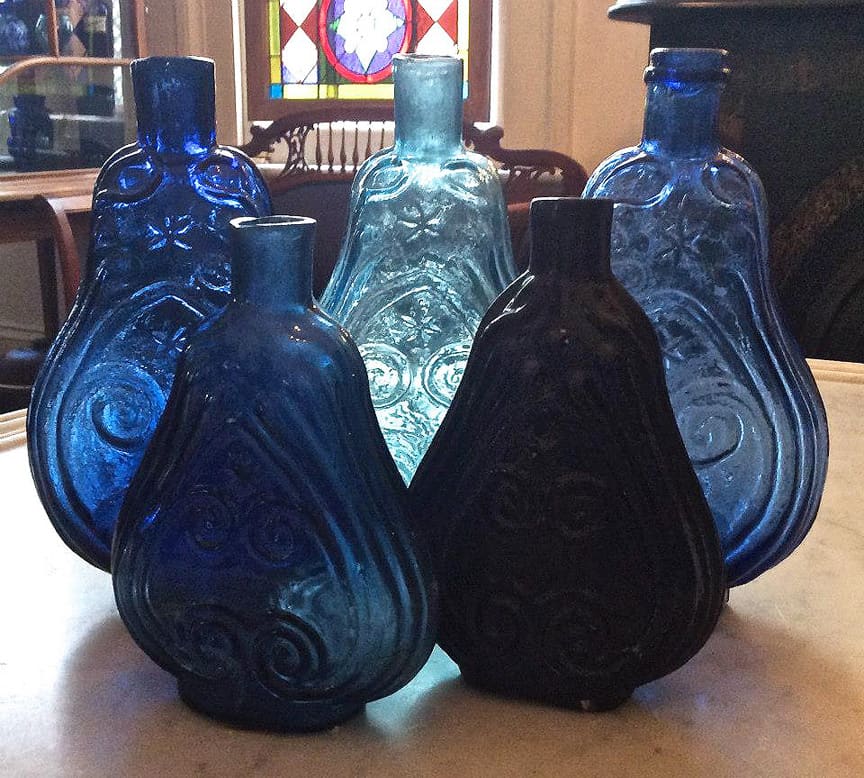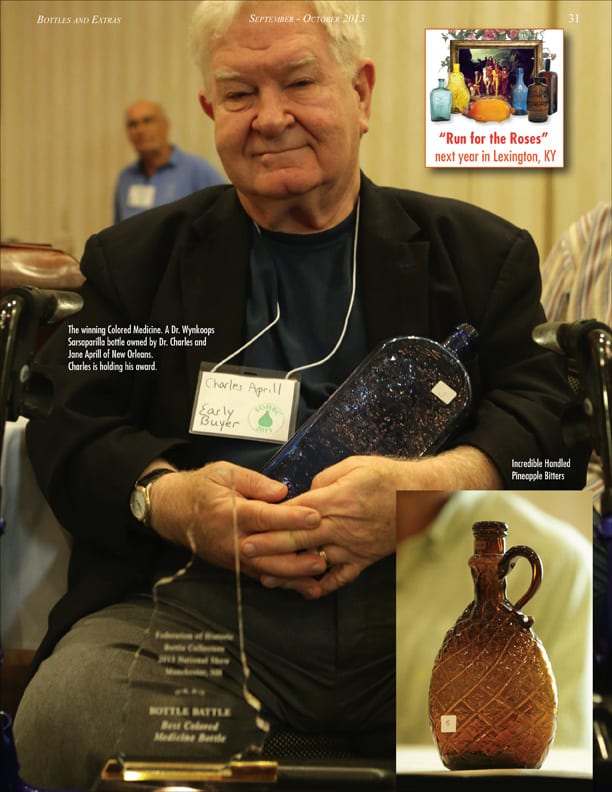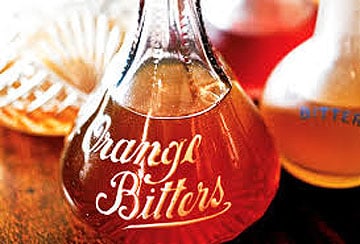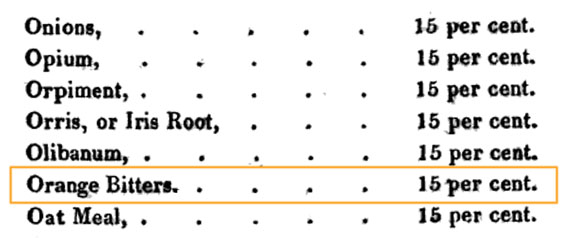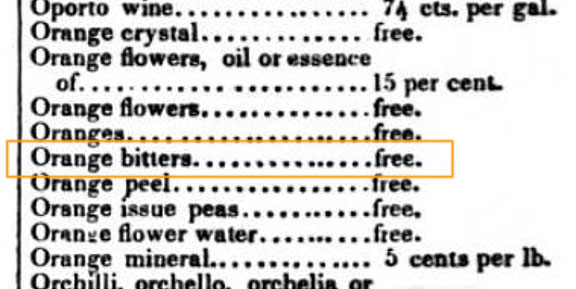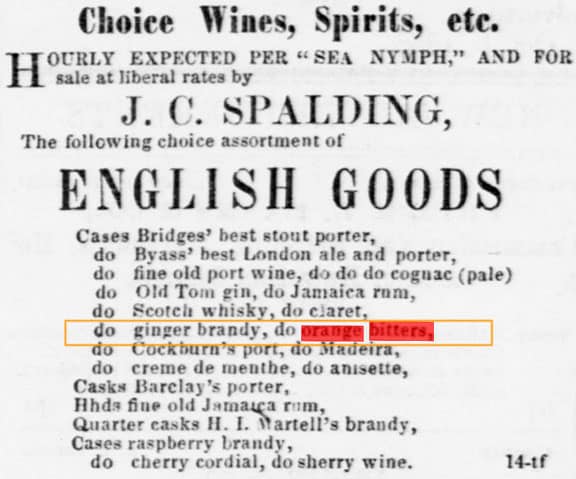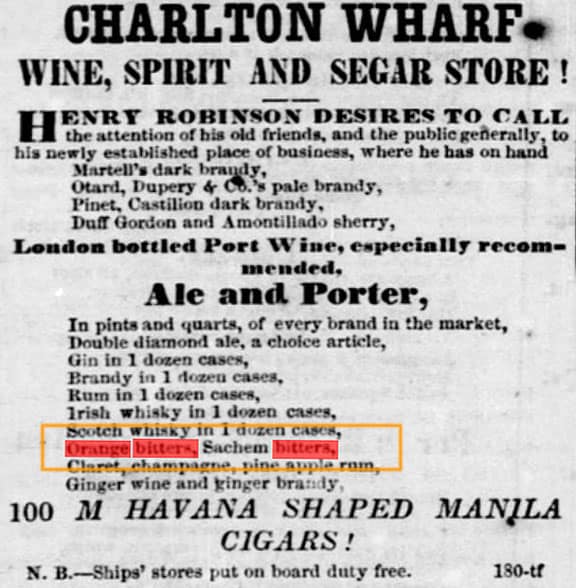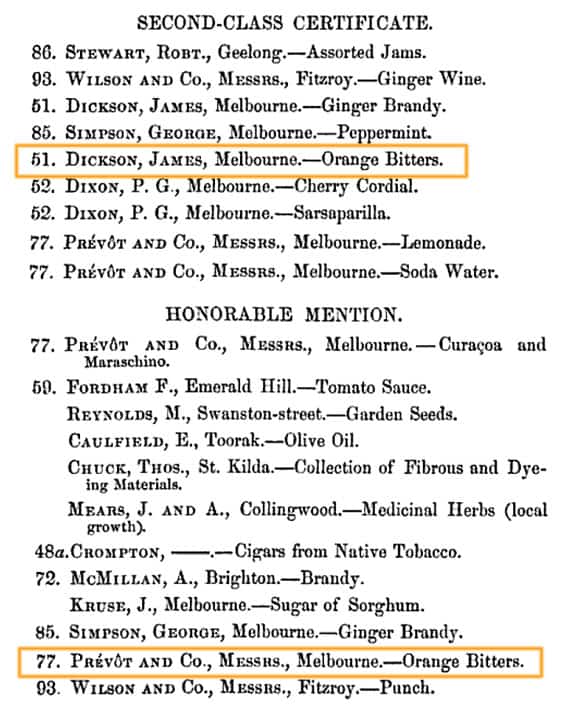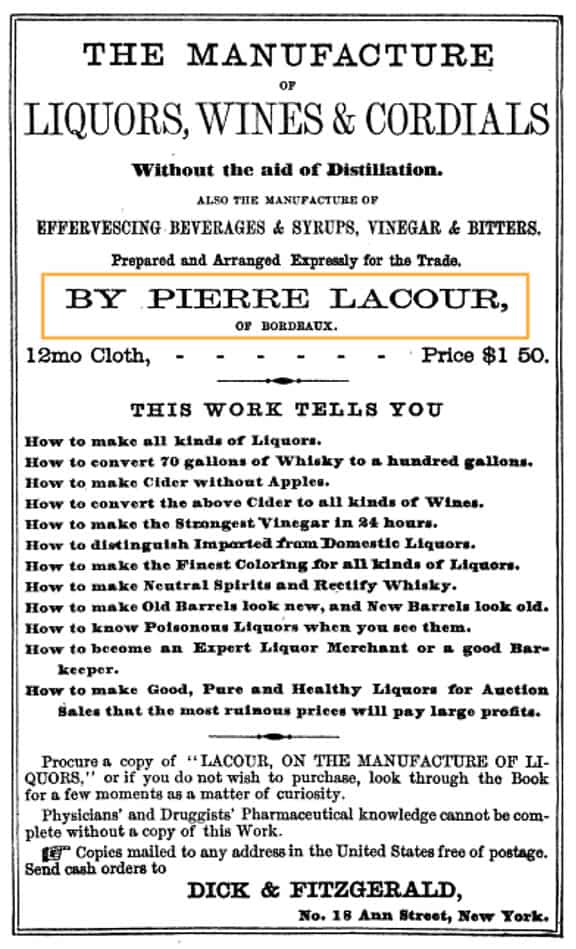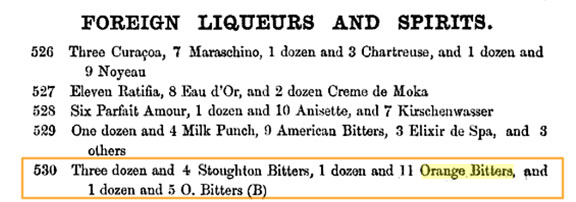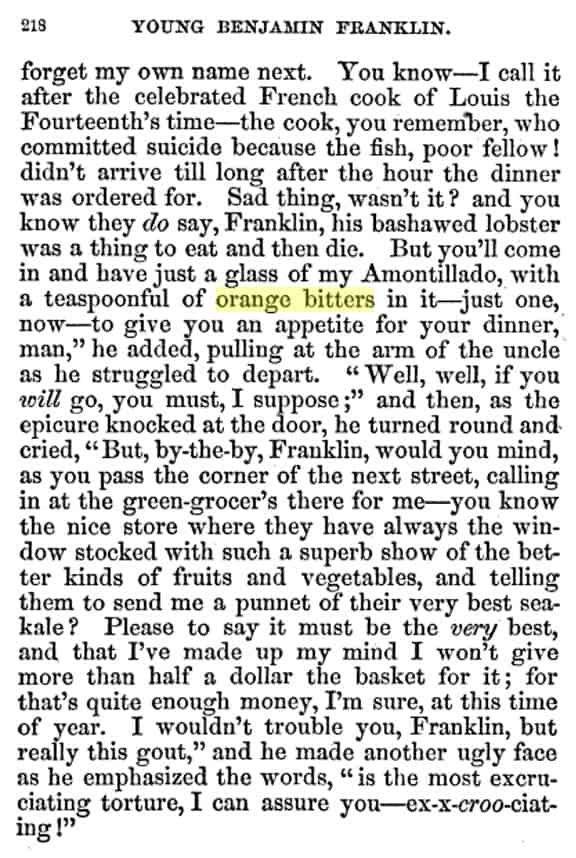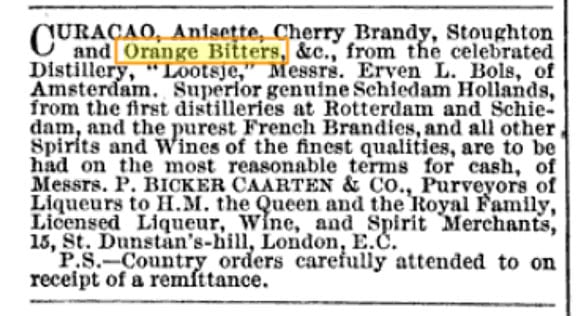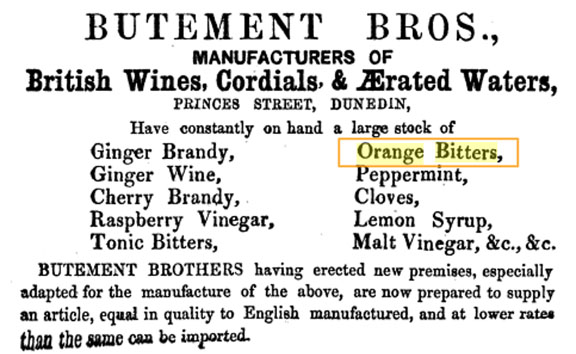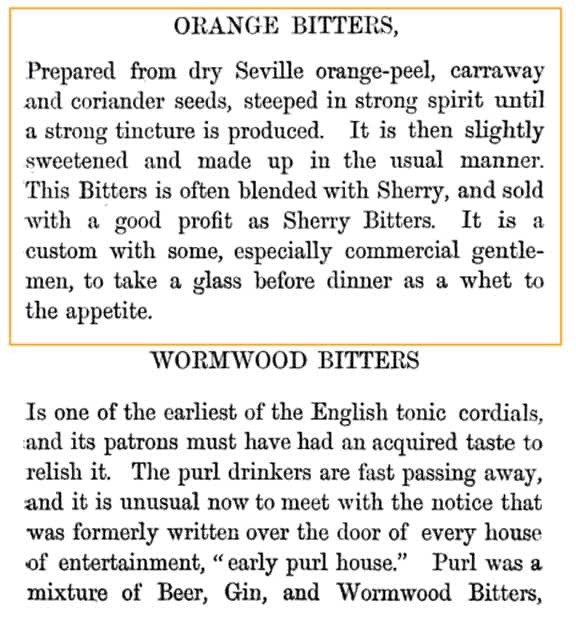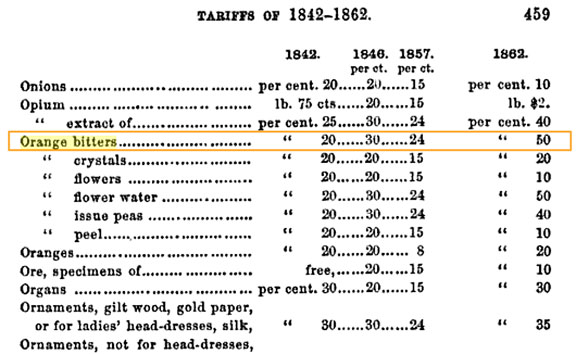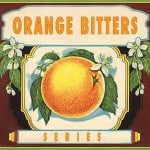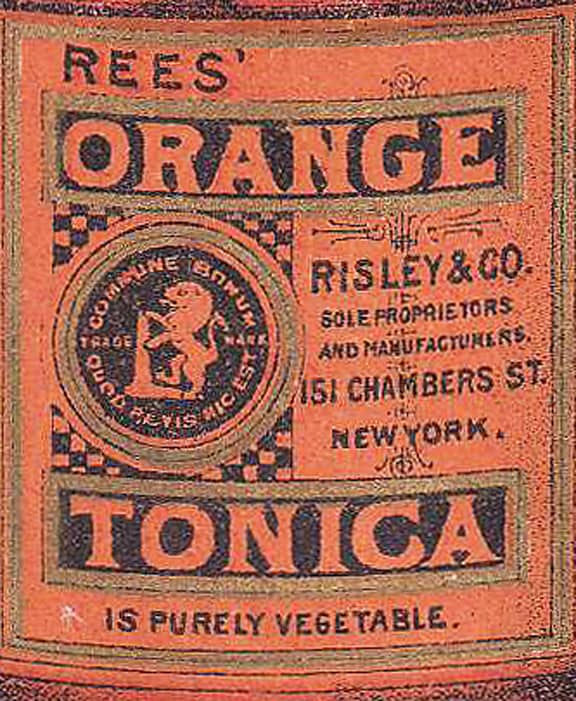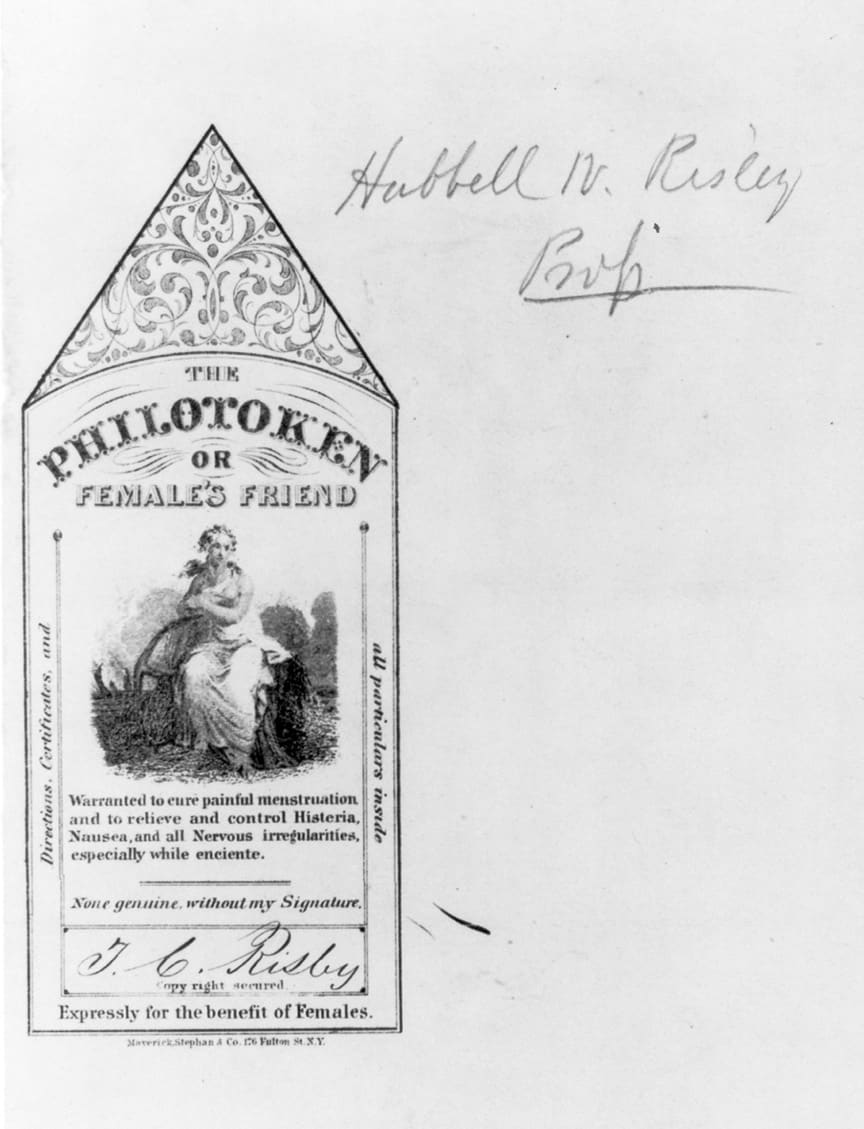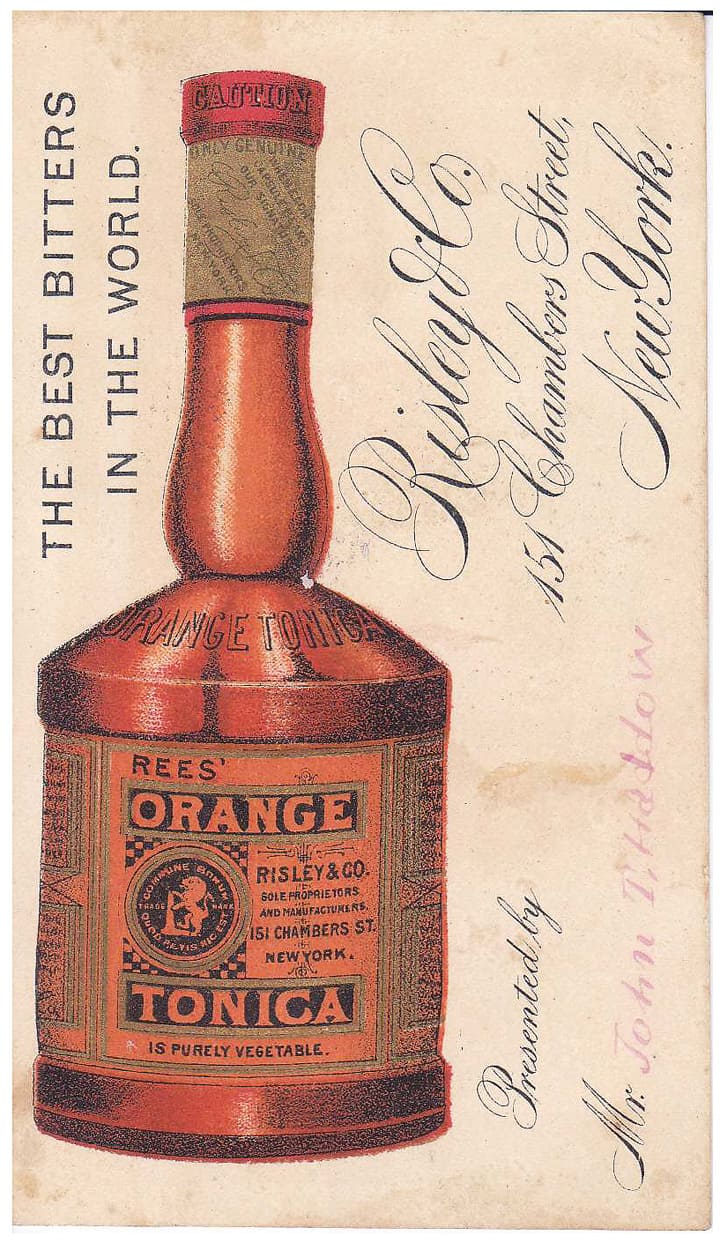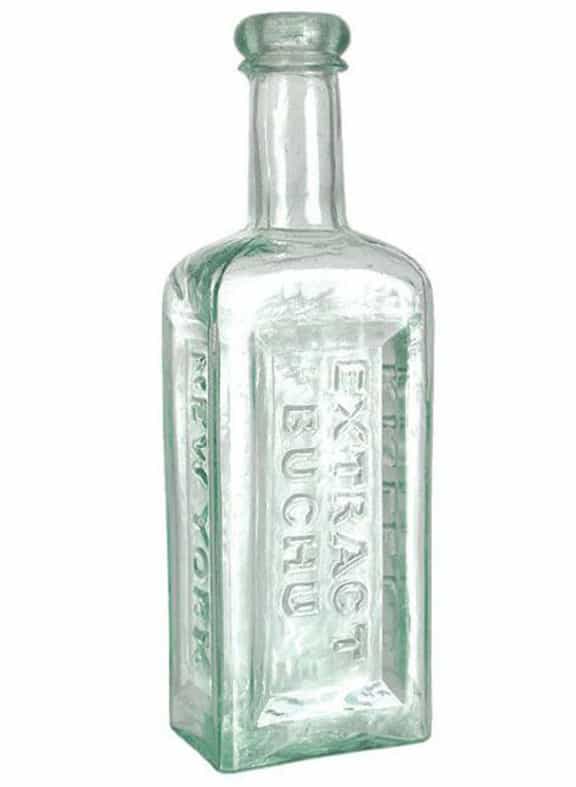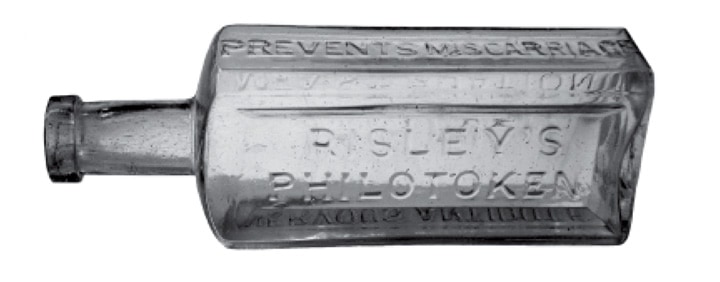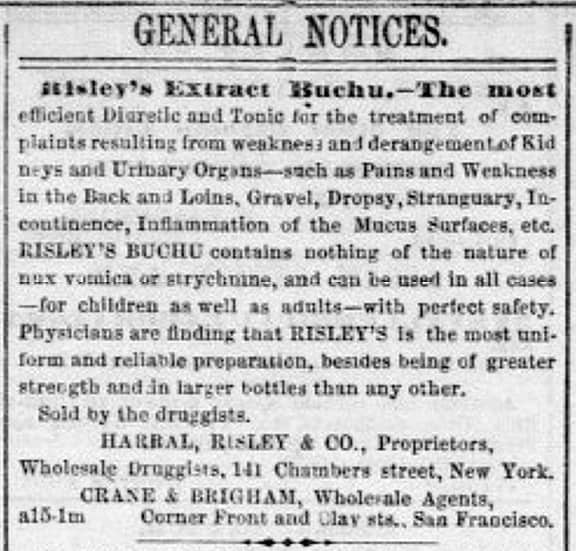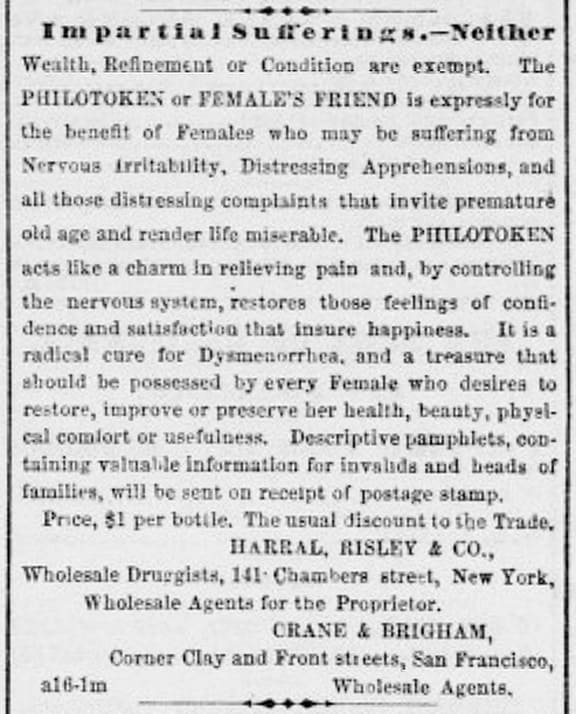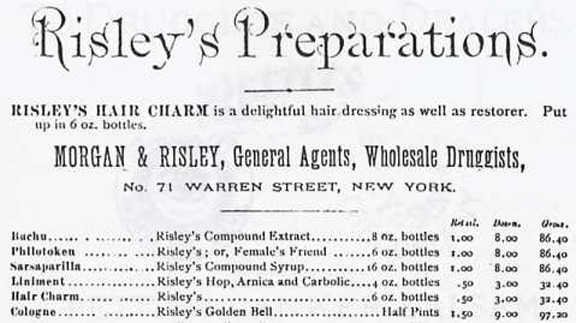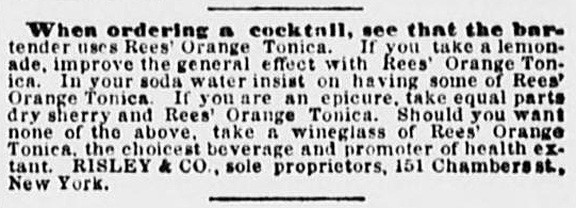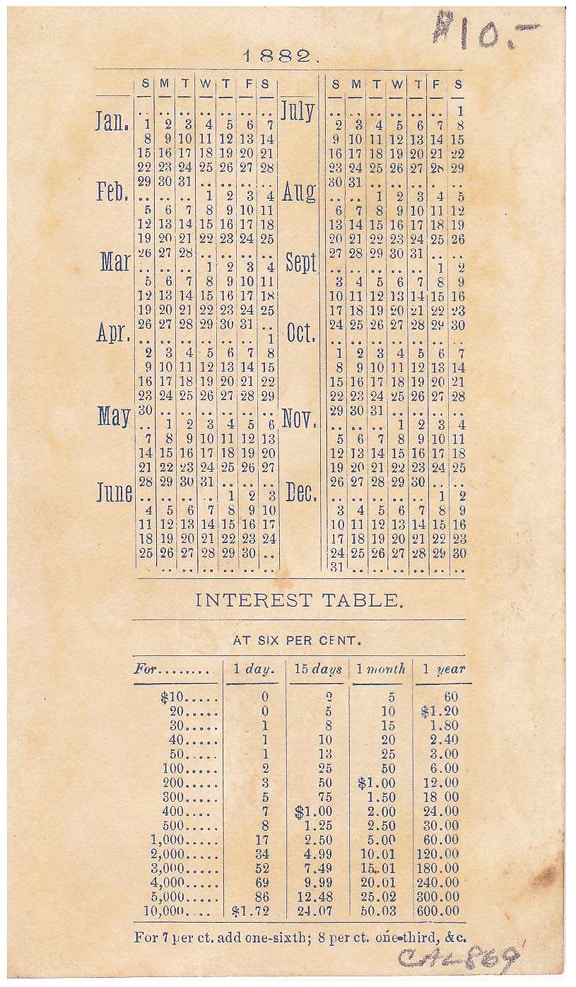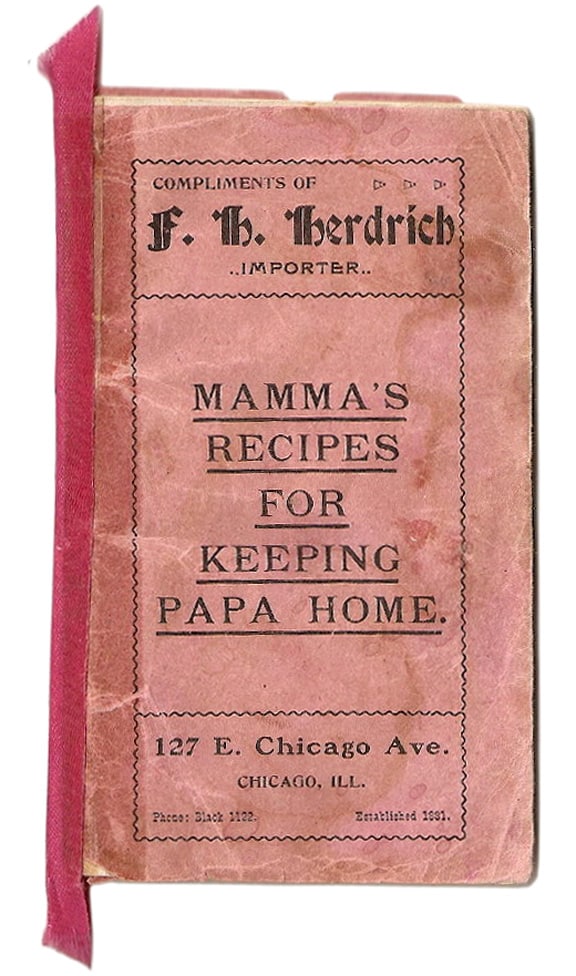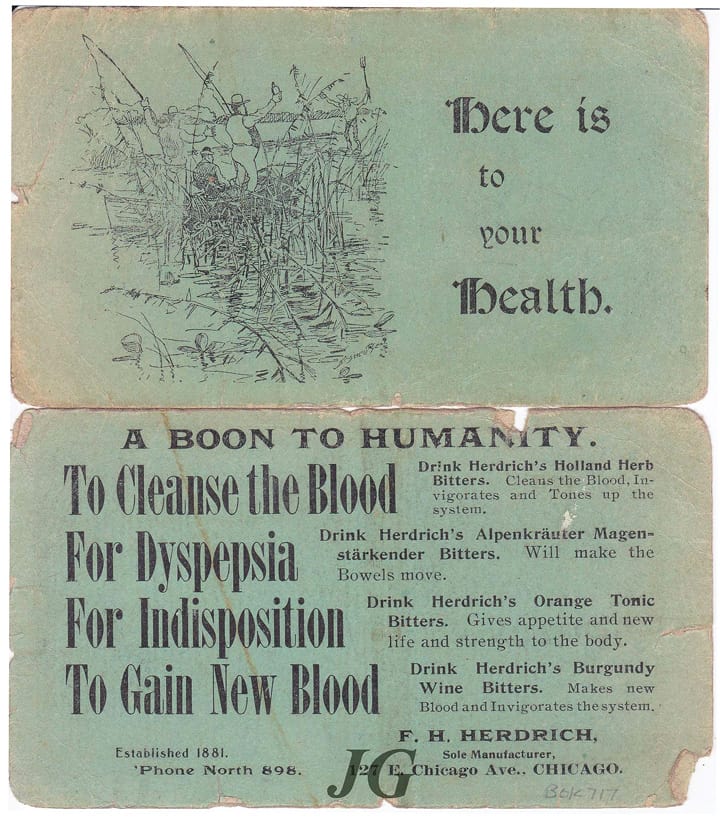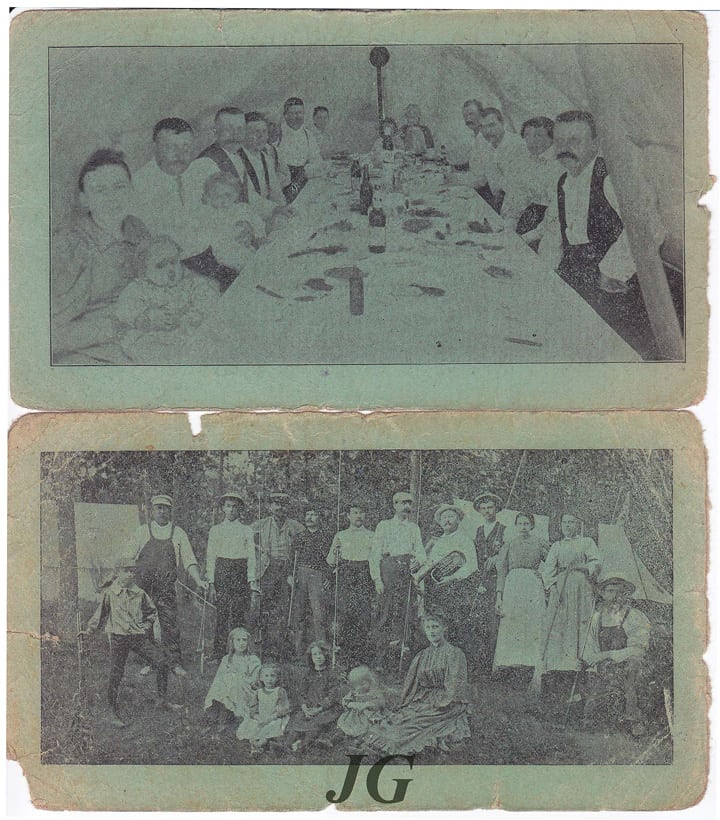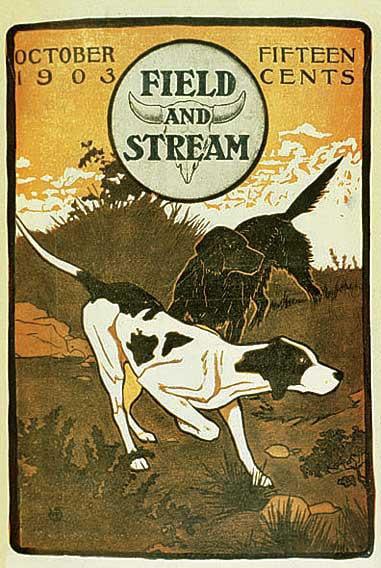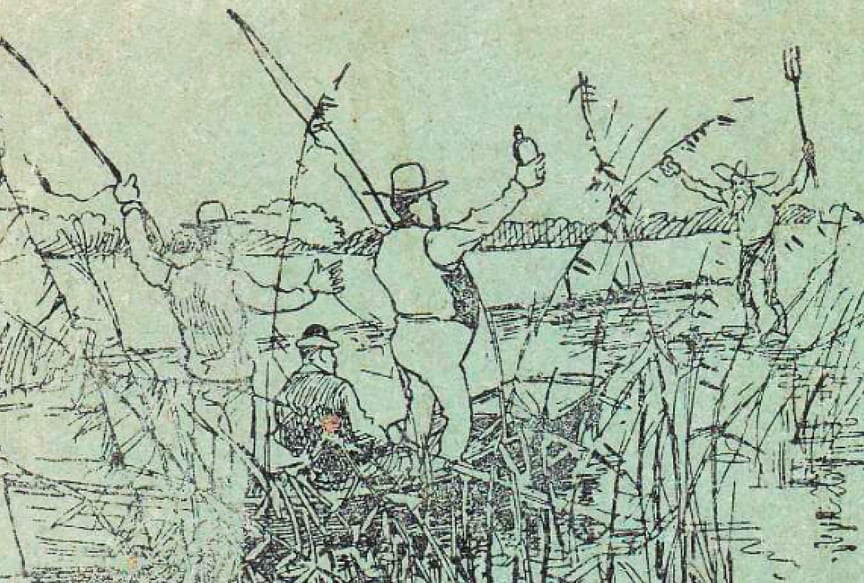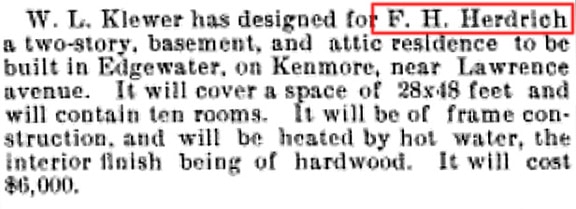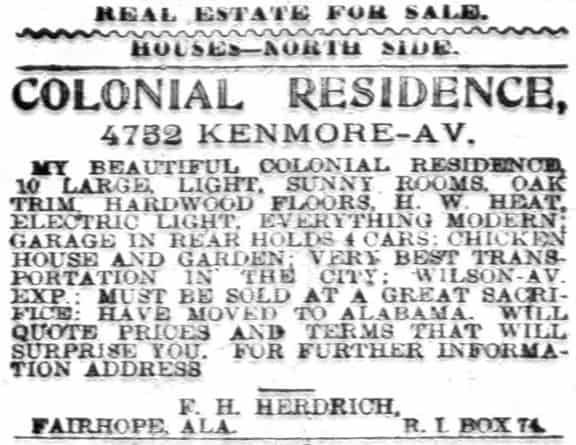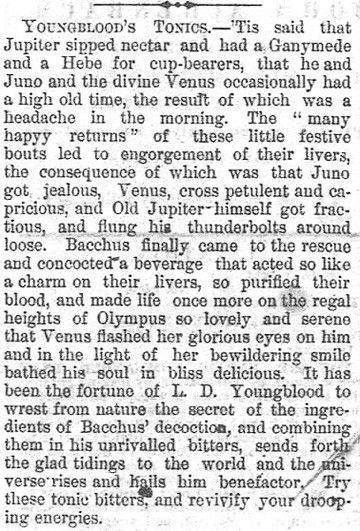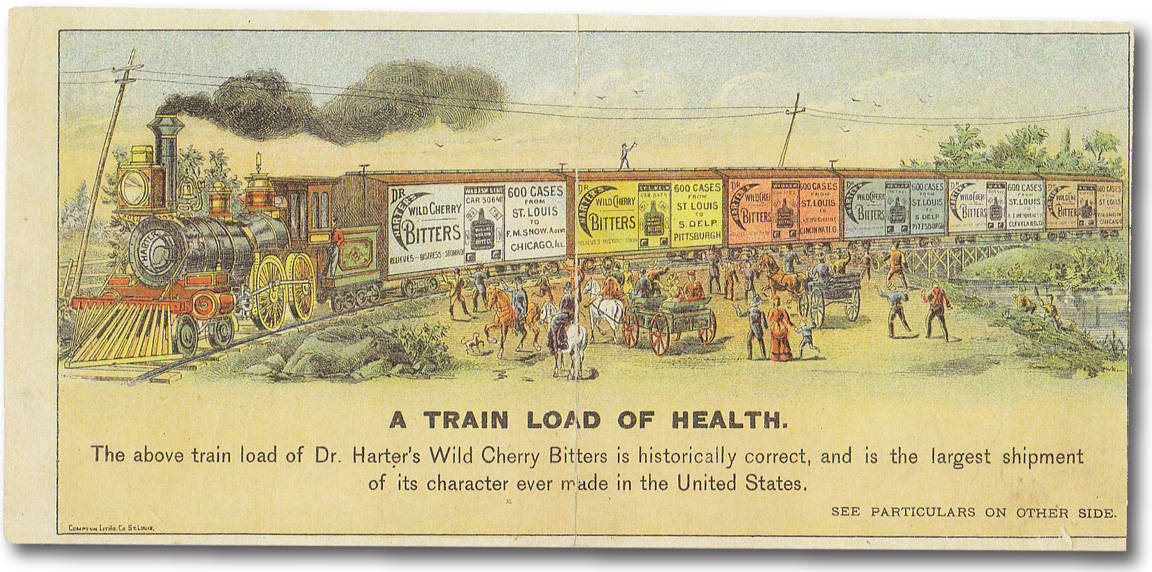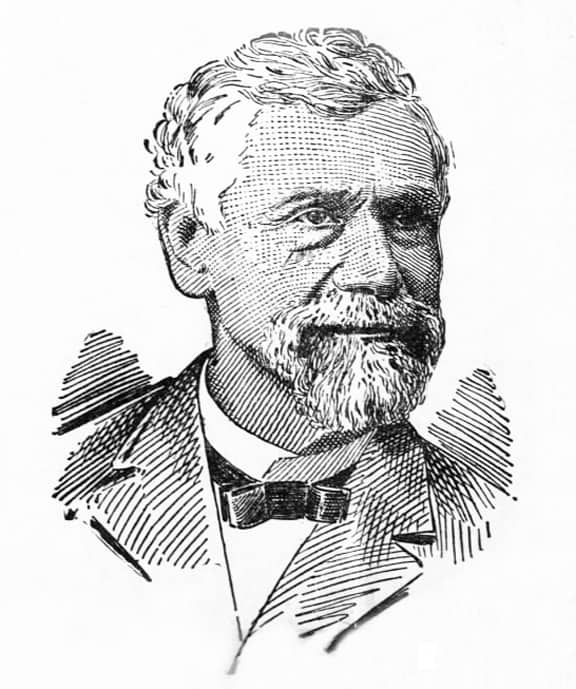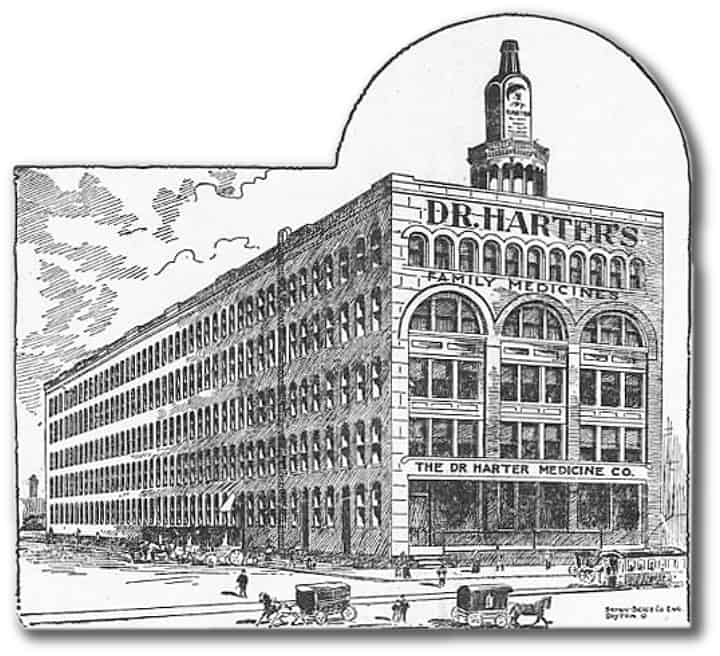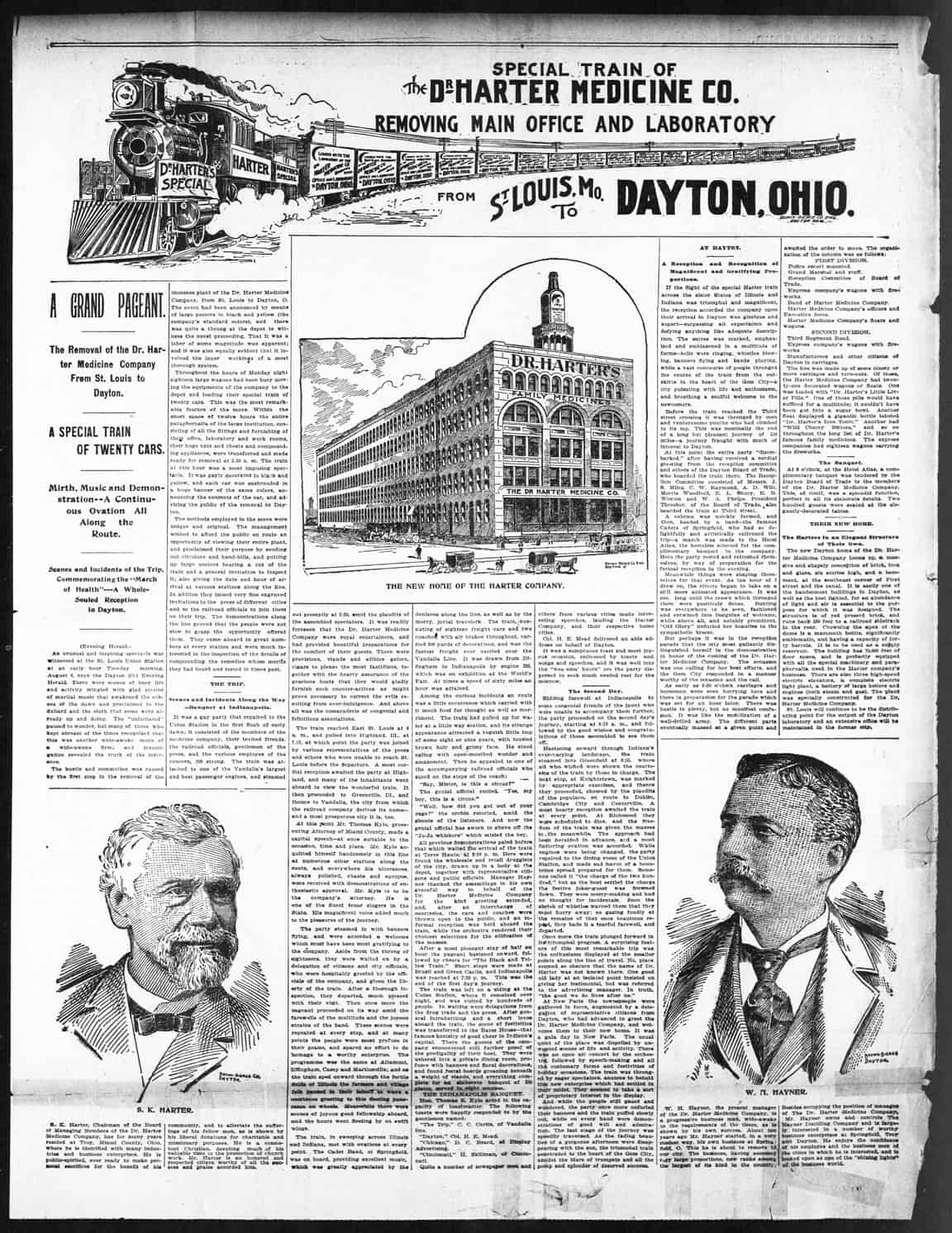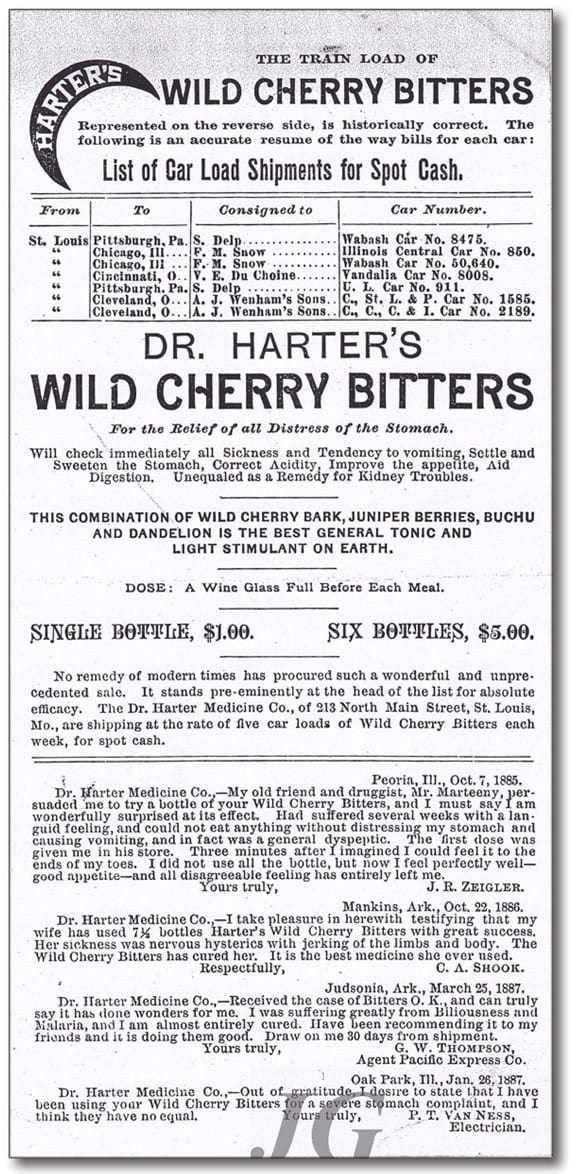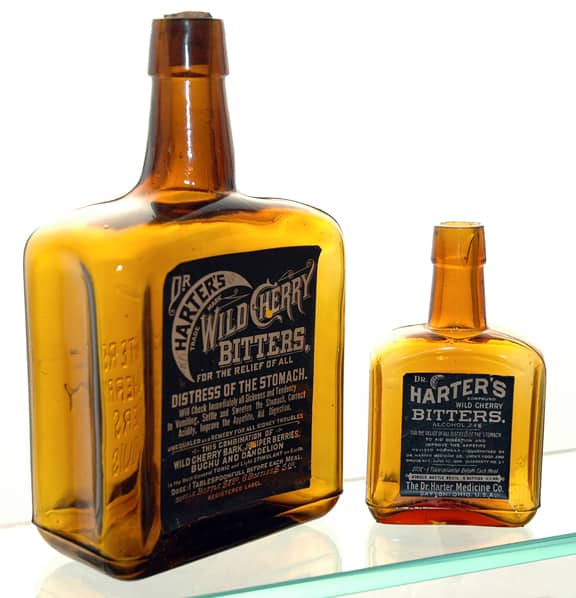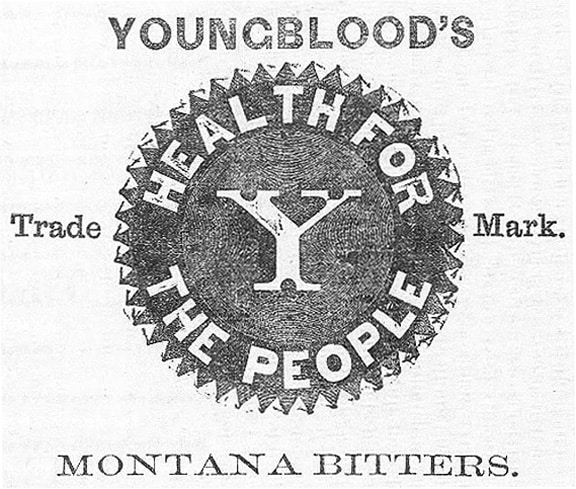
The rest of the story of Lorenzo D. Youngblood and his Tonic Bitters
by James Viguerie
17 February 2014 (R•111315 – Youngblood Shard) (092119 – BBs2 listing)
I am looking into four patents on Texas bitters. They were patented by Texans living in the following cities: Columbia, Fort Worth, Gatesville and San Antonio. All date from the 1870s and 1880s. Hopefully I will have a write up on each soon. These are all patented recipes so it is a little harder to associate with the actual brand of a bitters. As I have quite a few other patents to research, I might just turn them over to you, being you might have an extra interest in Texas bitters.
Lorenzo D. Youngblood of New York, who tragically committed suicide by morphine overdose in Salt Lake City, Utah Territory in 1879. One good thing Lorenzo did the year he died….he left us with an unlisted bitters from Montana!
In the meantime, I came across some information that can be added to a posting you did earlier on Youngblood’s Tonic Bitters – Galveston, Texas.
Initially, I had found some advertisements for Youngblood’s Tonic Bitters in Texas newspapers. I then searched in vain for anything more about the elusive Dr. L. D. Youngblood. There just was not much in Texas about him. I was just about to give up when I had one more hit on a Google search. Google can be funny that way. One has to try just the right combination of search words. This last web site led me to uncover much more about the sad tale of Lorenzo D. Youngblood of New York, who tragically committed suicide by morphine overdose in Salt Lake City, Utah Territory in 1879. One good thing Lorenzo did the year he died….he left us with an unlisted bitters from Montana!
The new listing in Bitters Bottles Supplement 2:
Newspaper Advertisement
Y 7.5 YOUNGBLOOD’S MONTANA BITTERS, H. H. H. Youngblood’s Montana Bitters, Y Health For The People trade mark. My famous Bitters it is confessed O’er all the Land it is the best; It has no rival far or near, In all our spacious hemisphere. L. D. Youngblood, Pharmacist. Alderman & Youngblood, Manufacturers. Butte City, Montana, The Benton Record (Benton, Montana Territory), June 6, 1879
Here are the advertisements I found while searching for other Texas bitters. The largest ad is from the Henderson, Texas, July 25, 1874 issue of “The Henderson Times”. It mentions Youngblood’s Tonic Bitters and Youngblood’s Liver Tonic. In the section on the bitters was a little verse:
“My famous Bitters ‘tis confessed, O’er all the land they are the best, They have no rival far or near, In all our spacious hemisphere, I’m sure the fortunate concoctor, Has saved more lives than any doctor, So keep them, friends, a prize deposit, To stand at all times in your closet.”
In the Liver Tonic section is another one:
“The sparkling eye – the blooming cheek, The ruddy glow of perfect health, These are the riches all should seek, These are, indeed, the truest wealth.”

Youngblood’s Tonic Bitters and Youngblood’s Liver Tonic advertisement – The Henderson Times, July 25, 1874
A similar, but smaller, advertisement (see below) was found in the January 24, 1874 issue of the Dallas Weekly Herald.
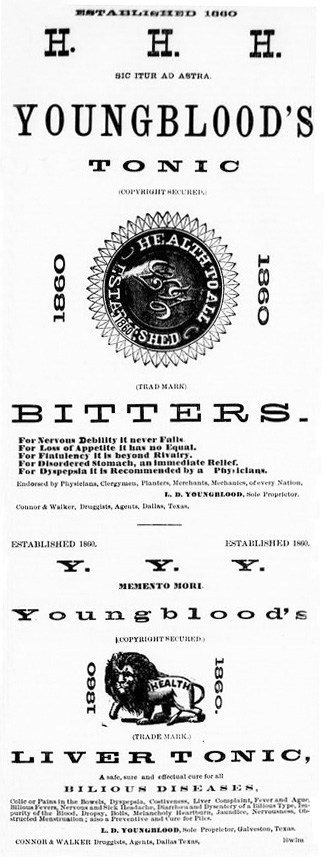
Youngblood’s Tonic Bitters and Youngblood’s Liver Tonic advertisement – Dallas Weekly Herald, January 24, 1874
I also was able to track down mention of Youngblood’s Tonics in a couple of other newspapers. In this October 12, 1873, Houston Daily Mercury newspaper advertisement, Youngblood’s Bitters is compared to a potion whipped up by the Roman God Bacchus (see below).
A few weeks later his claims were less bold, and it was simply referred to as “A Good Tonic” in the Houston Daily Mercury (see below) on Thursday, October 23, 1873.
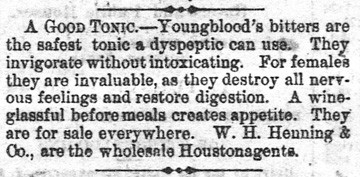
“A Good Tonic” advertisement for Youngblood’s Bitters in the Houston Daily Mercury on Thursday, October 23, 1873.
These advertisements led me to wonder just who was Dr. L. D. Youngblood? I found where he visited Houston to peddle his tonic in the August of 1873 issue of the Houston Daily Mercury (see below) on Saturday, August 23, 1873.
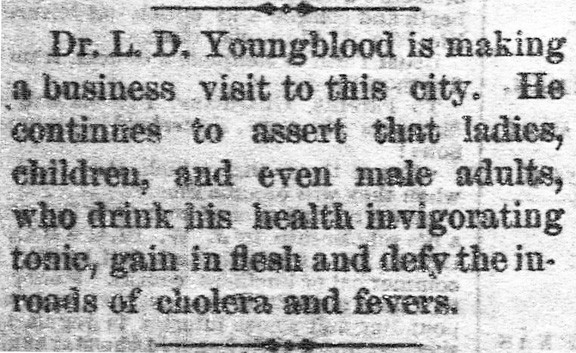
Dr. L. D. Youngblood visited Houston to peddle his tonic in August of 1873 – Houston Daily Mercury, Saturday, August 23, 1873
The June 14, 1874 Galveston Daily News mentioned “L. D. Youngblood was fined yesterday $3 and costs for disorderly conduct.” I did not know at the time but this was a foreshadowing of what was to come.
I tried varying the searches I was doing and finally struck gold…. in Deadwood, Dakota Territory
I had searched a while in Texas records and newspapers without having much luck. I tried varying the searches I was doing and finally struck gold…. in Deadwood, Dakota Territory!
“In August 1875, gold was discovered in the gulch that would later become the location of the infamous city of Deadwood, South Dakota. The entire Black Hills area was off-limits to whites at that time, having been designated as Sioux land in the Treaty of 1868. Nevertheless, by the following spring, thousands of miners had swarmed into the forbidden land and Deadwood became the center of the 1876 rush. Founded almost simultaneously with the town was the newspaper, the Black Hills Pioneer, which provides a revealing record of that turbulent first year. Deadwood is one of the few mining boom towns that has survived to the present day. Although the original city was destroyed in the fire of 1879, many buildings dating from the 1890s have survived and are still clinging to the sides of the hills along Whitewood and Deadwood creeks.”
Read: Black Hills Pioneer: First Newspaper of Deadwood, Dakota Territory, 1876-1877 by Nancy Niethammer Kovats
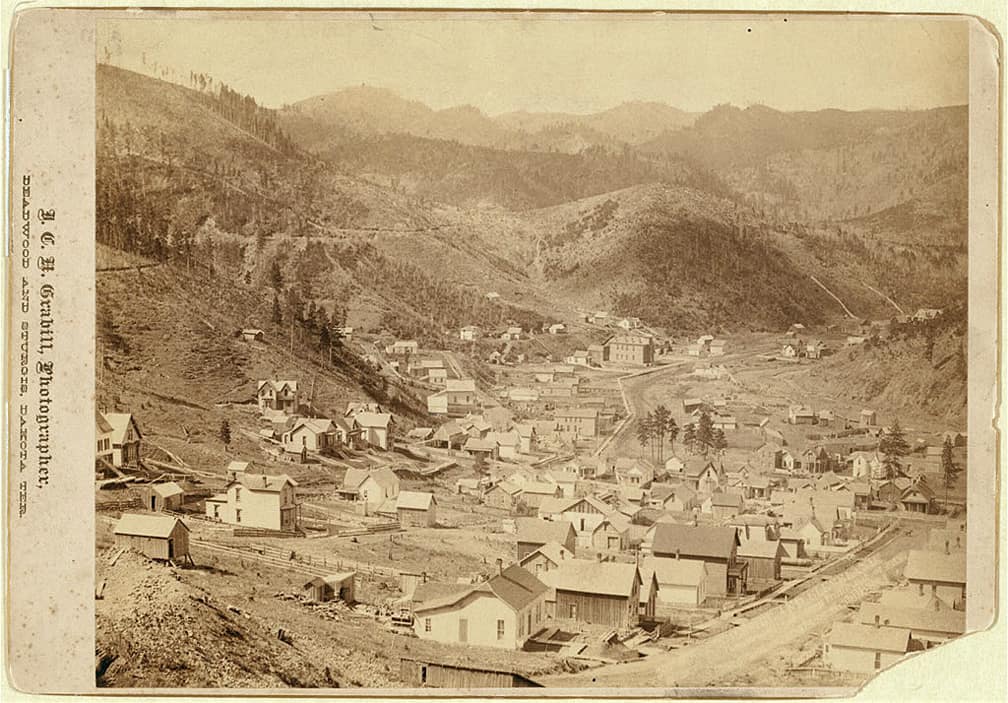
Deadwood, Dakota Territory
With the gold rush, Dr. Lorenzo D. Youngblood knew an opportunity when he saw it and headed north. And perhaps things were getting a little too hot for him in Texas. The website I found with Google that opened up this search, and provided me his first name, is deadwoodcharacters.com.
This webpage, somehow connected with the Deadwood Genealogy Forum, lists short summaries of newspaper stories of residents of Deadwood and the surrounding area. Finally having a first name I was able to put together the following chronology of Dr. Youngblood:
Dr. Youngblood Timeline
1847: Montgomery (Orange Co.), New York. Christened Feb 4, 1847 at the Dutch Reformed Church. – familysearch.org
1855: Crawford (Orange Co.), New York. New York census (see below). Lorenzo age 8, born in New York. Father Hanson Youngblood, mother Sarah J. Youngblood. – New York State Census 1855

Crawford (Orange Co.), New York census. Lorenzo age 8, born in New York. Father Hanson Youngblood, mother Sarah J. Youngblood. – New York State Census 1855
1860: Crawford (Orange Co.), New York. U.S. Census. Lorenzo D. Youngblood age 14. – familysearch.org
1870: U. S. Census. Two L. D. Youngbloods were found around the right age and born in New York. One was a clerk in a Dry Goods store in Omaha, the other a druggist in Crawford, New York. My bet is on the second one.
1870: L. D. Youngblood (see below), age 23, Sept 16, 1870 Druggist, Crawford (Orange Co.) New York
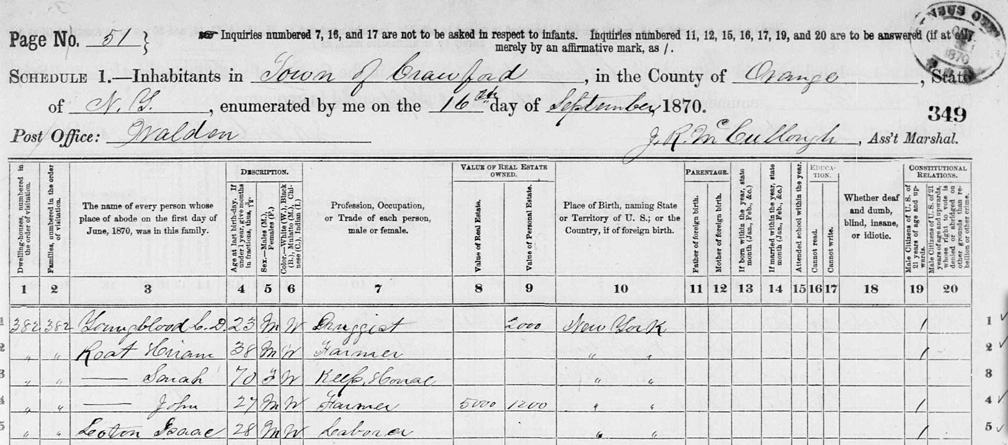
L. D. Youngblood, age 23, Sept 16, 1870, Druggist, Crawford (Orange Co.) New York
1873-74: Texas. Advertisements in Texas newspapers showing a Youngblood’s Tonic Bitters and a Youngblood’s Liver Tonic. Dr. L. D. Youngblood was in Tyler Texas. One mention of disorderly conduct (see further above).
1876-78: Dakota & Montana Territories. Advertisements and articles related to Dr. Lorenzo D. Youngblood. Unfortunately, I do not have access to the actual newspapers, only the index on the deadwoodcharacters.com website.
September 23, 1876: Dr. L. D. develops a rejuvenizer.
October 14, 1876: Youngblood rejuvenizer advertisement, McKinney, Philips agent.
June 5, 1877: Lorenzo D. Youngblood in court.
June 9, 1877: Lorenzo D. Youngblood found not guilty.
June 25, 1877: Prof. Youngblood preserving philanthropists.
July 6, 1878: Prof. Youngblood in Fort Benton [Montana] manufacturing his bitters.
1879: Denver, Colorado. In April, his wife committed suicide. In the write-up of Lorenzo’s own suicide was this:
“The Dispatch’ says of Youngblood that he has had a great deal of domestic trouble, his wife having committed suicide in Denver last April, leaving a little girl, whom, it seems is now being cared for by friends in that city.”
1879: Butte, Montana Territory. In June he apparently married another woman. L. D. Youngblood married Lottie Blair in Butte, Deer Lodge Co., Montana on June 6, 1879. Did Lorenzo know Lottie earlier? Was this why his first wife committed suicide? Either way, 2 months is an incredibly short morning period.
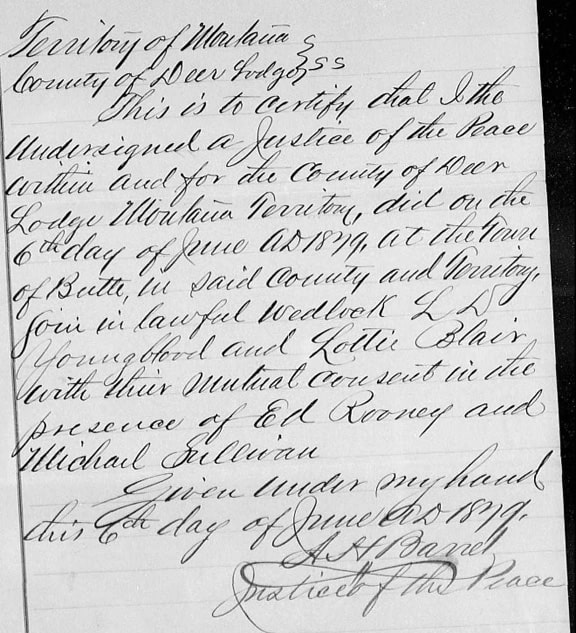
L. D. Youngblood married Lottie Blair in Butte, Deer Lodge Co., Montana on June 6, 1879.
In the write-up of Lorenzo’s suicide was this:
“Youngblood’s marriage with a Park street woman, was a matter of town talk some weeks before his departure.”
On the same day as his marriage was an advertisement in “The Benton Record” on June 06, 1879 for a Youngblood’s Montana Bitters! (Someone better get digging A.S.A.P.). The layout of this advertisement conclusively connects to the earlier Texas advertisements. Note, I still do not know what the “H. H. H.” stands for. (PRG: Hearty, Healthy & Happy) I did find out “sic itur Ad astra” is a Latin phrase meaning “thus you shall go to the stars”. What this has to do with bitters, I have no idea. Well if we were talking about Asteroid Tonic Bitters I could see a connection. At the bottom is a reference that Alderman & Youngblood are the manufactures of the bitters.
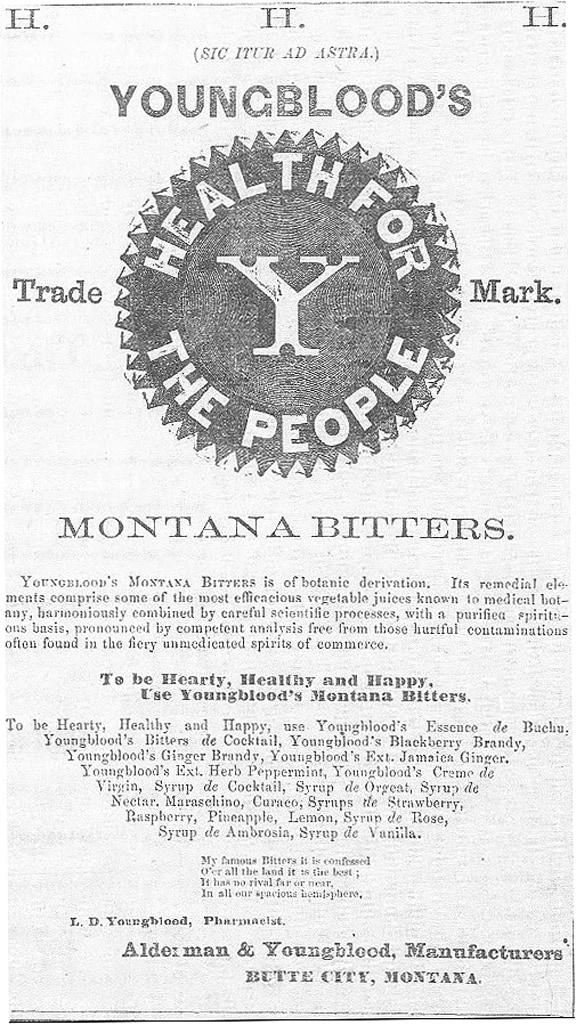
Advertisement in “The Benton Record” on June 06, 1879 for a Youngblood’s Montana Bitters!
1879: E. M. Alderman moves his laboratory for Youngblood’s Montana Bitters (see below)

Notice: E. M. Alderman moves his laboratory for Youngblood’s Montana Bitters – The Montana Standard, Saturday, August 23, 1879
1879: Salt Lake City, Utah Territory. In October, The Daily Miner in Butte, Montana printed an article that originally was in the Salt Lake Tribune. It tells the sad story of L. D. Youngblood. Due to a “love for strong drink” he had lost his business, second wife and eventually his life. The article does indicate he originally came from New York. His partner in the manufacture of a Montana Bitters was E. M. Alderman. It sounds like he had drifted to Ogden and worked as a waiter before making it to Salt Lake City.

Suicide of L. D. Youngblood – Butte Daily Miner, Oct 7, 1879
He went into a barber shop, announced his suicidal purposes and in the presence of the Inmates, swallowed ten grains of morphine.
THE DAILY MINER. Butte, Montana, Tuesday, Oct. 7, 1879 SUICIDE OF L. D. YOUNGBLOOD
THE SALT LAKE ‘TRIBUNE’ of the 3d. instant, gives the following account of the suicide of L. D. YOUNGBLOOD, formerly of this place. Youngblood while here was connected with Mr. E. M. Alderman in the manufacture of bitters, syrups, flavoring extracts, etc., an occupation in which he might have done well if he had let liquor alone and had attended closely to business. But it seems this was impossible. The love of strong drink had gained so great an ascendancy over him that the unfortunate man was utterly unreliable, not only towards his business associate but even to himself. Work begun in good faith and with the evident purpose of being finished out of hand, would be dropped when half completed, while the slave of the cup would abandon himself, to drink even though he knew that the half-finished preparation would thereby prove a total loss. Youngblood’s marriage with a Park street woman, was a matter of town talk some weeks before his departure. Upon the failure of repeated efforts to induce Youngblood to reform, Mr. Alderman brought a dissolution of the partnership, when Mr. Y. drifted off southward to meet the fate here described. He was originally from New York, and was over 40 years of age.
L. D. YOUNGBLOOD, a former waiter at the Union Depot Hotel, Ogden, shuffled off this mortal coil this afternoon. He went into a barber shop, announced his suicidal purposes and in the presence of the Inmates, swallowed ten grains of morphine. Youngblood’s intoxicated condition deceived the lookers-on, who supposed his talk drunken jargon. He bade them good-bye and passed on to Beardsley’s Hotel. From there he was taken to the Globe Hotel by the police, muttering on his way expressions to the effect that he had taken poison. At the Globe his symptoms became alarming and near 11 o’clock in the evening he passed away.
The Dispatch’ says of Youngblood that he has had a great deal of domestic trouble, his wife having committed suicide in Denver last April, leaving a little girl, whom, it seems is now being cared for by friends in that city. Youngblood was a handsome, fine-appearing man about 30 years of age; he was pleasing in deportment and when not under the influence of liquor, had an affable, gentlemanly manner, which could have made him friends wherever he would have gone. He had no doubt experienced a great deal of trouble and disappointment and his sad death is probably but the termination of a very unhappy career.
Read: Youngblood Article
I doubt we will ever learn the full story, but I imagine it would have been interesting. To go from getting married to dying by your own hand just three months later is quite a turn around. But then I did not know his second wife.
It looks like the Dr. Youngblood shot during the train robbery of 1892 was a different man. Here is another story that mentions him. Perhaps this was the Nebraska store clerk of 1870. I just hope that he too got into the bitters business. Read: Train Robbery Again
I plan to track down the two Trade Marks referenced in Youngblood’s advertisements. Interestingly one shows an 1860 date. As he was only 13 in 1860, did Dr. Youngblood get the bitters recipe from someone else? His father, Hanson, was always shown as a farmer in the census records. Perhaps it was something he picked up as a druggist in New York? Maybe, when he got to Texas he ran into someone with a bitters that needed better marketing.
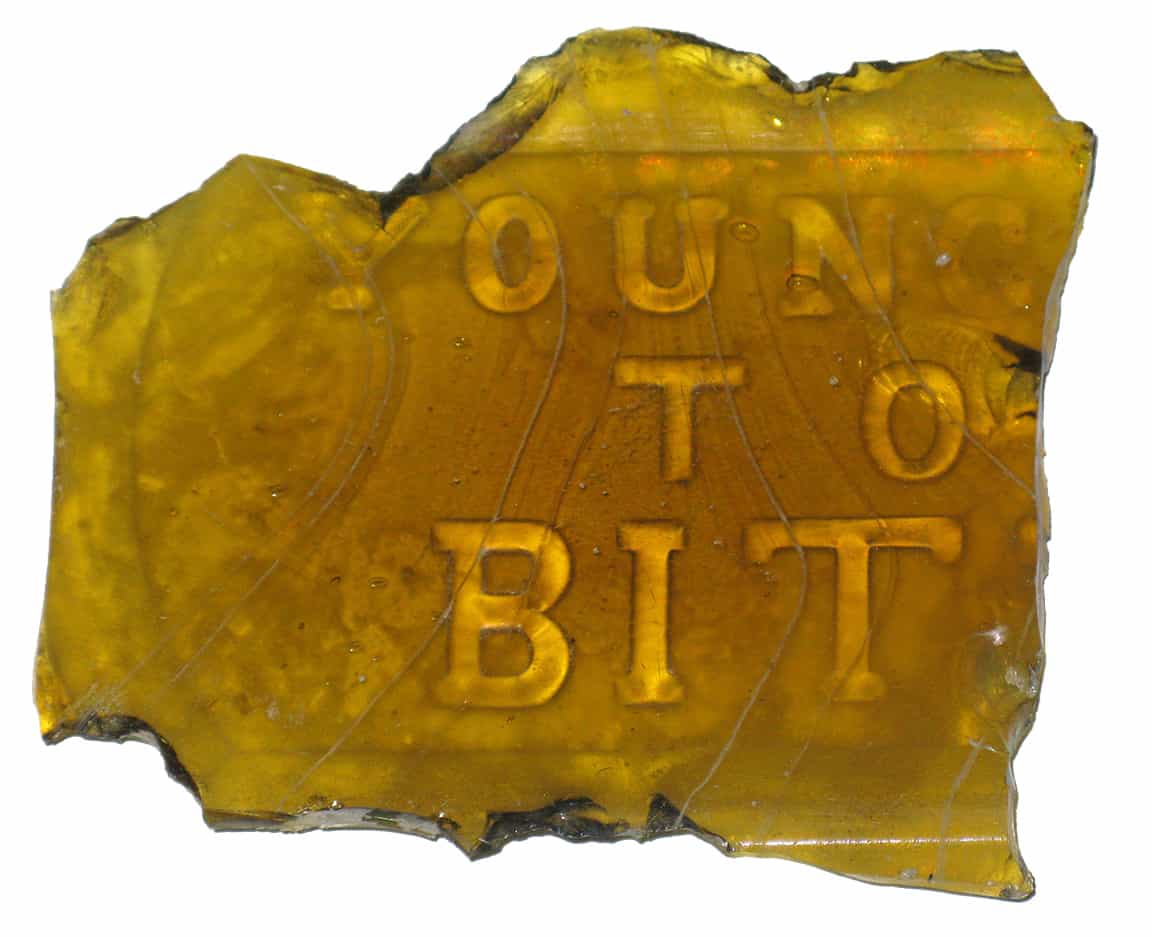
[11-13-15]
Ferdinand, Dug a broken Youngblood’s Tonic Bitters in Galveston the other day. Honestly didn’t have a clue what it was so only saved the front panel and the lip. When I go back to the site, I am going to re-excavate the pit (it is just a tiny trash pit) and see if I can find enough to glue together a good part of the bottle. Pit was full of broken Hostetters, Wolfe’s Schnapps, etc…looked to be late 1860’s or maybe early 1870’s.
Thought you might be interested…it is a beautiful light amber color.
Best Regards,
Brandon DeWolfe, P.E.
![]() Here is a odd handbill (below) from my collection representing Dr. Langley’s Rocky Mountain Bitters. The piece pictures the trade mark for the brand. My question is, is the Dr. Langley’s Rocky Mountain Bitters related to Dr. Langley’s Root and Herb Bitters? Looks like both Langley bitters may have been competing in some of the same markets. Unfortunately, I have not been able to find the family connection. Very mysterious.
Here is a odd handbill (below) from my collection representing Dr. Langley’s Rocky Mountain Bitters. The piece pictures the trade mark for the brand. My question is, is the Dr. Langley’s Rocky Mountain Bitters related to Dr. Langley’s Root and Herb Bitters? Looks like both Langley bitters may have been competing in some of the same markets. Unfortunately, I have not been able to find the family connection. Very mysterious.